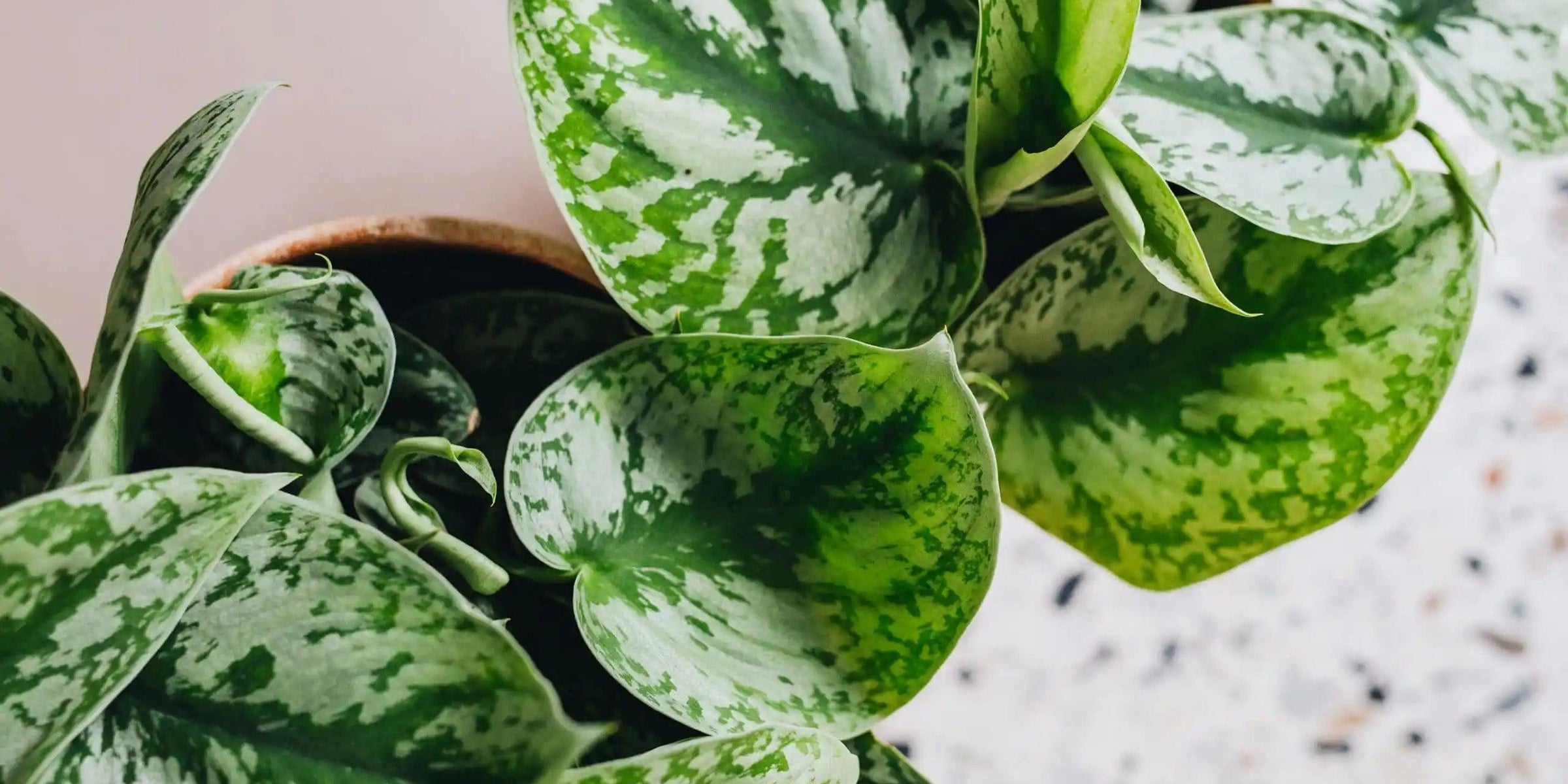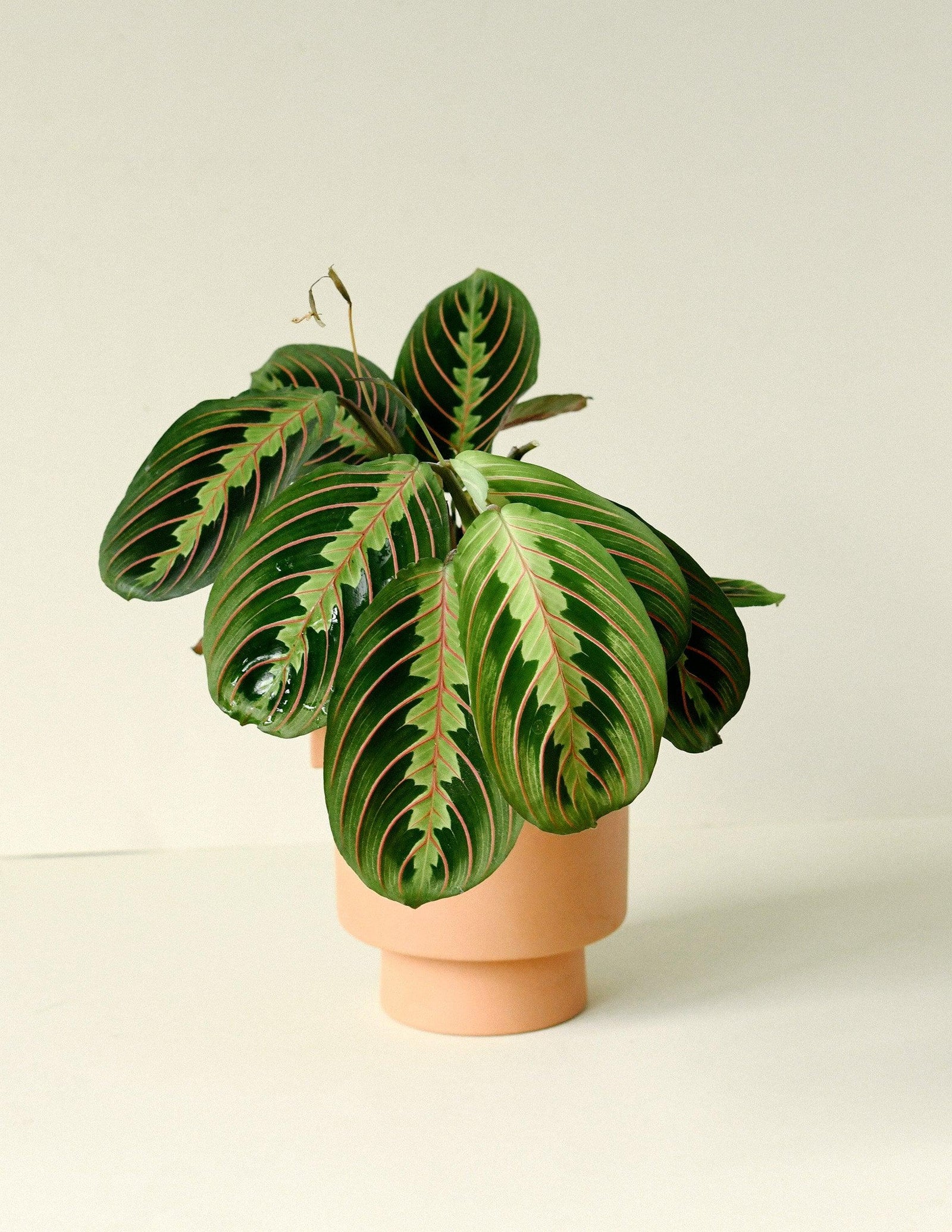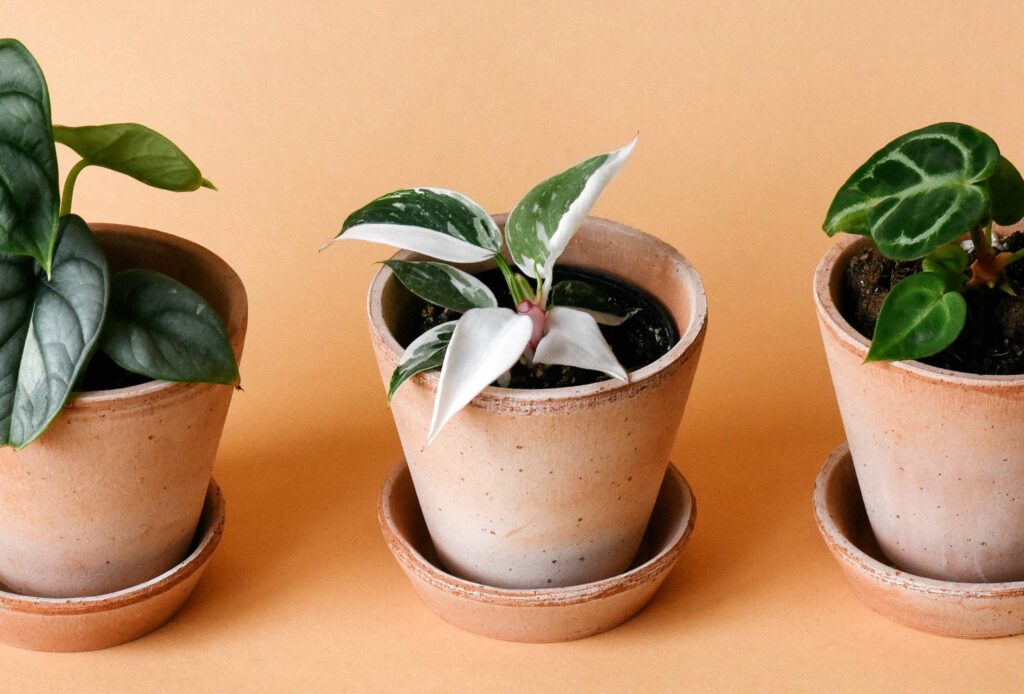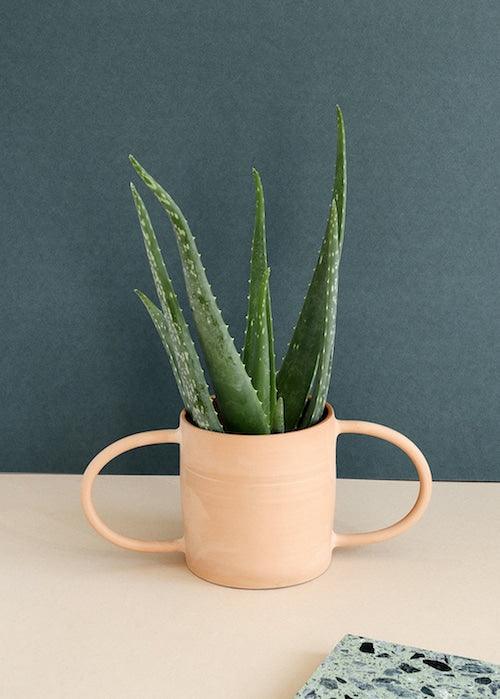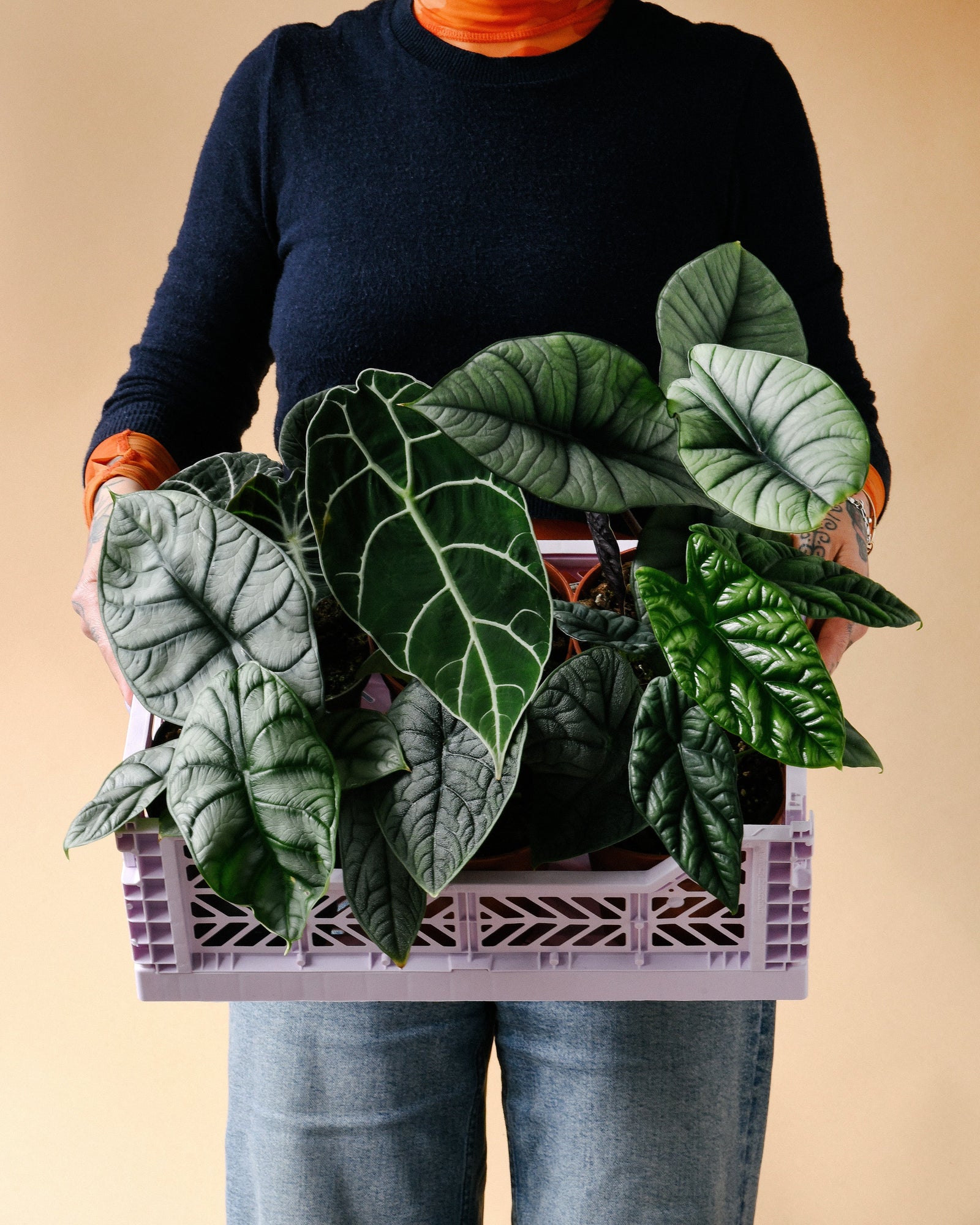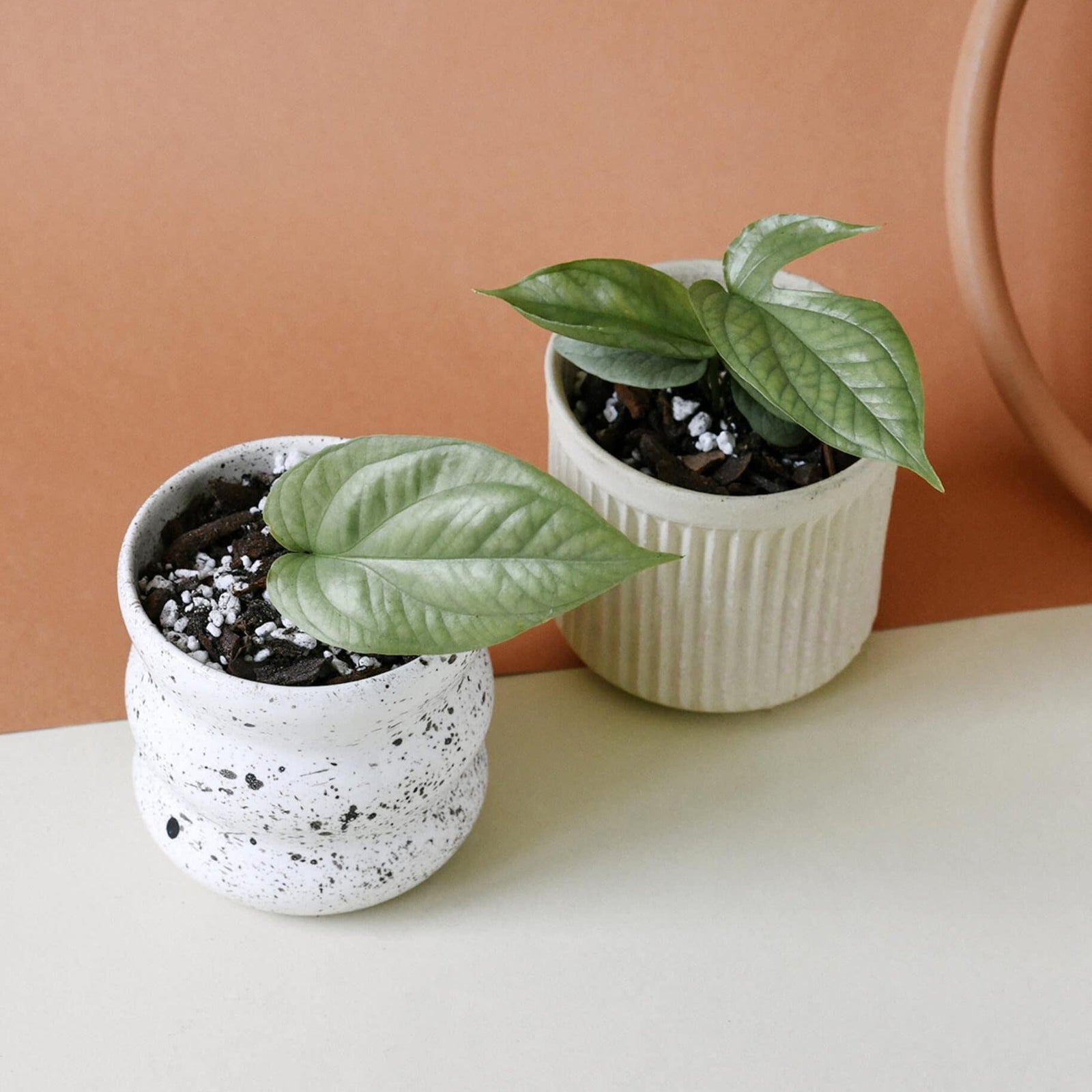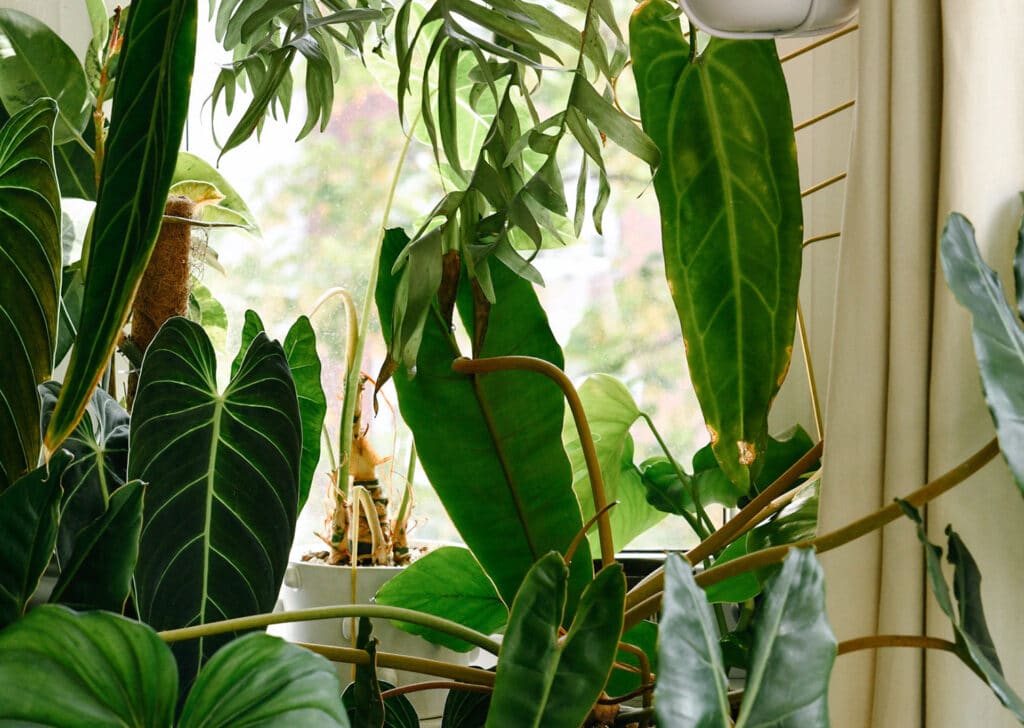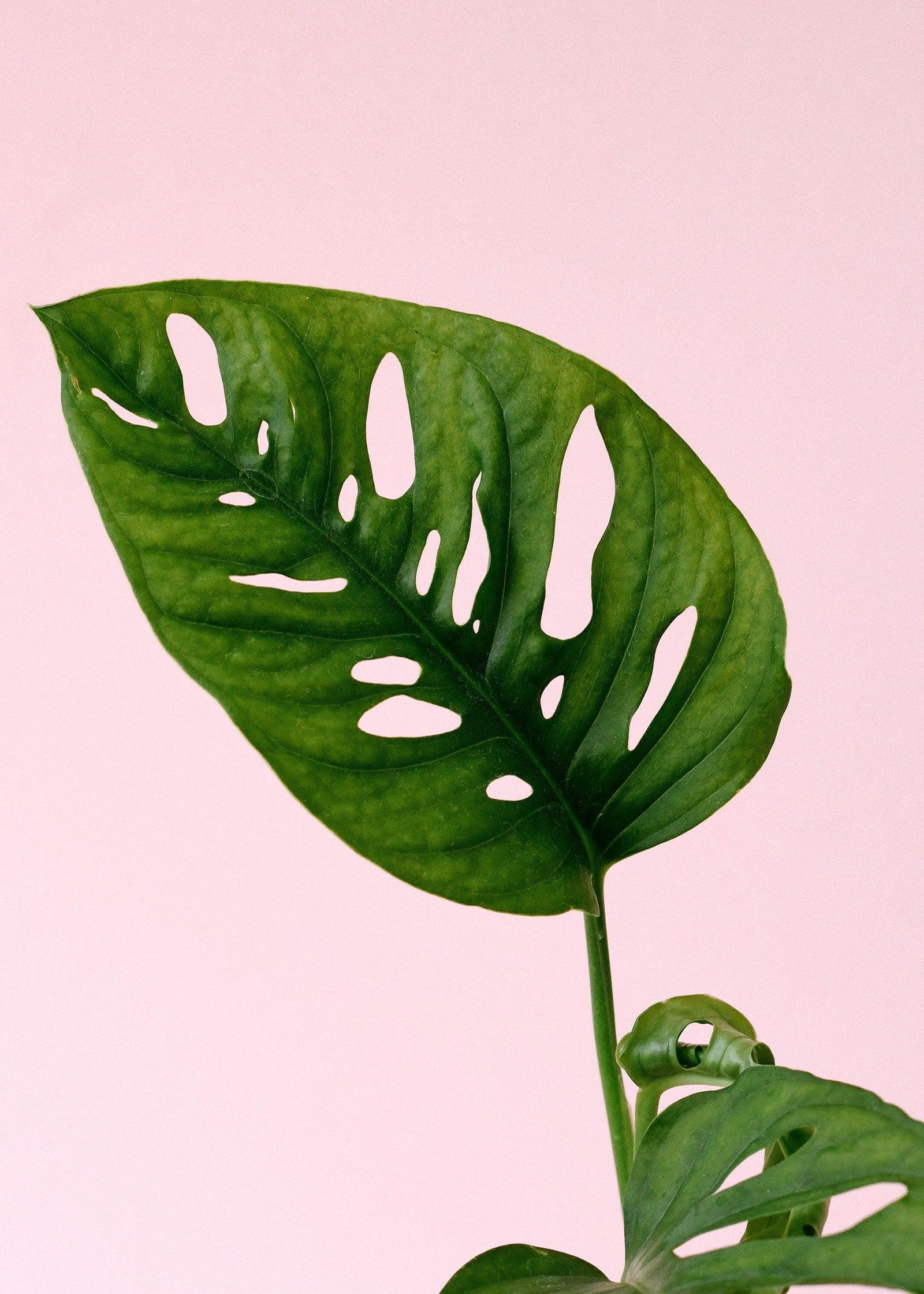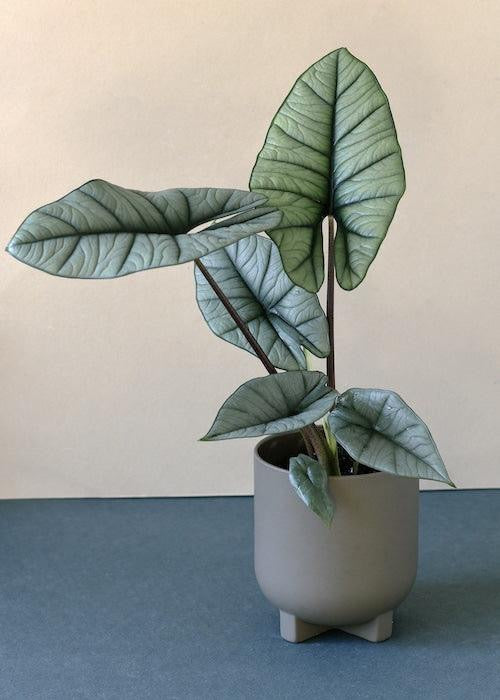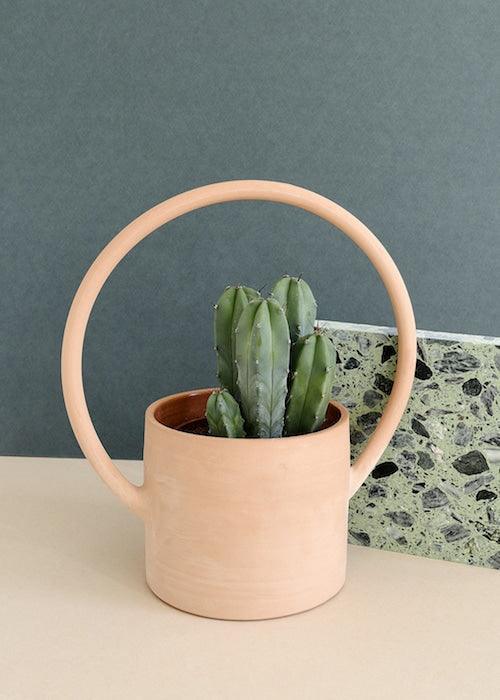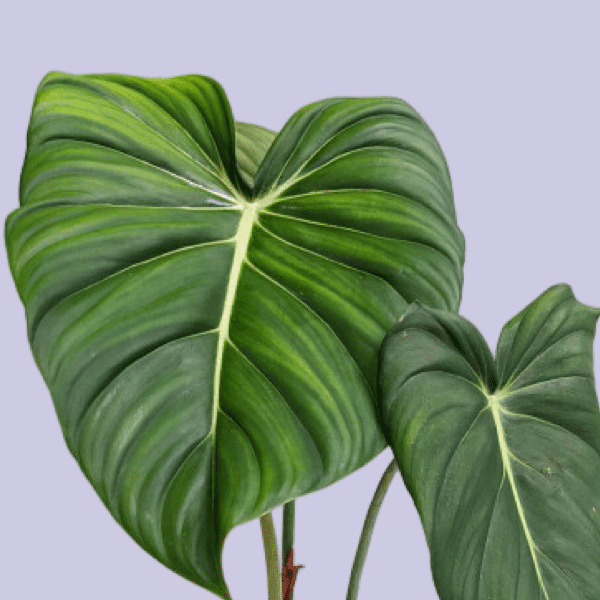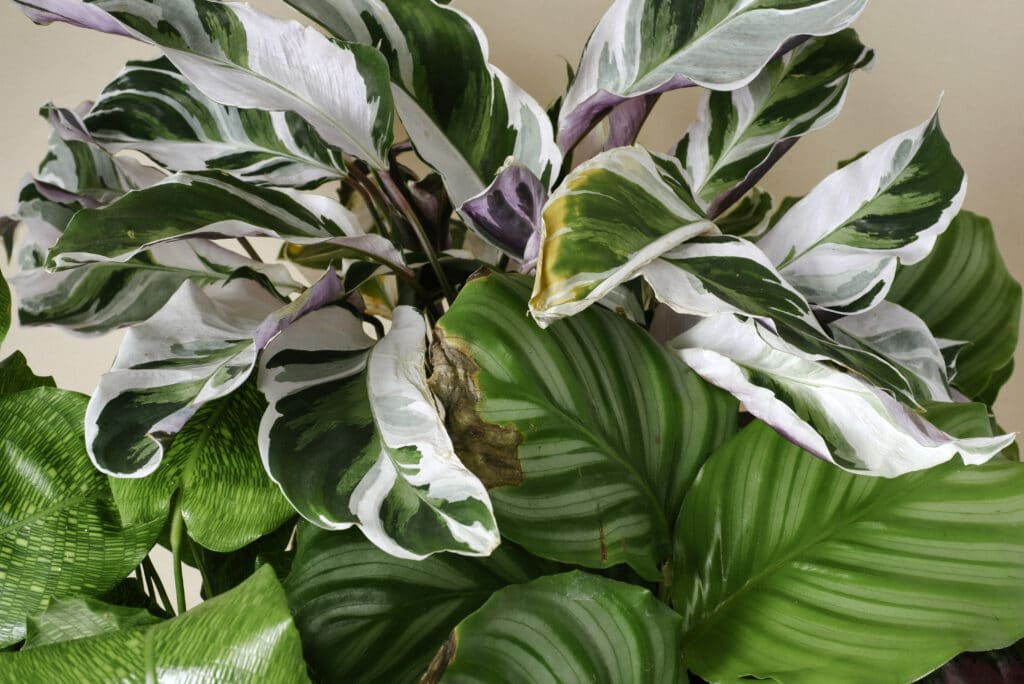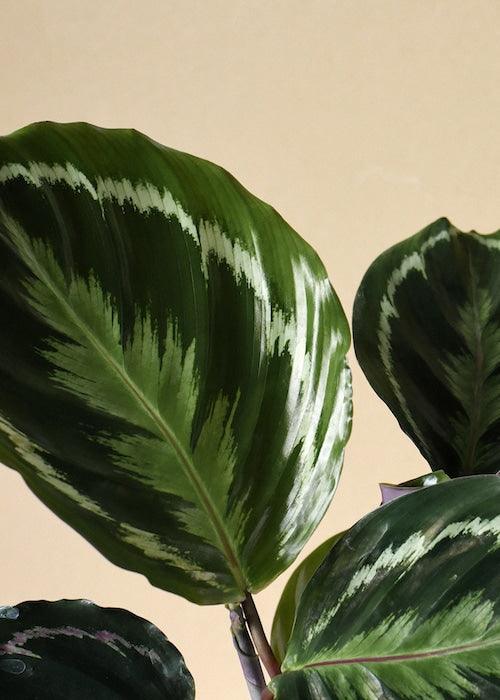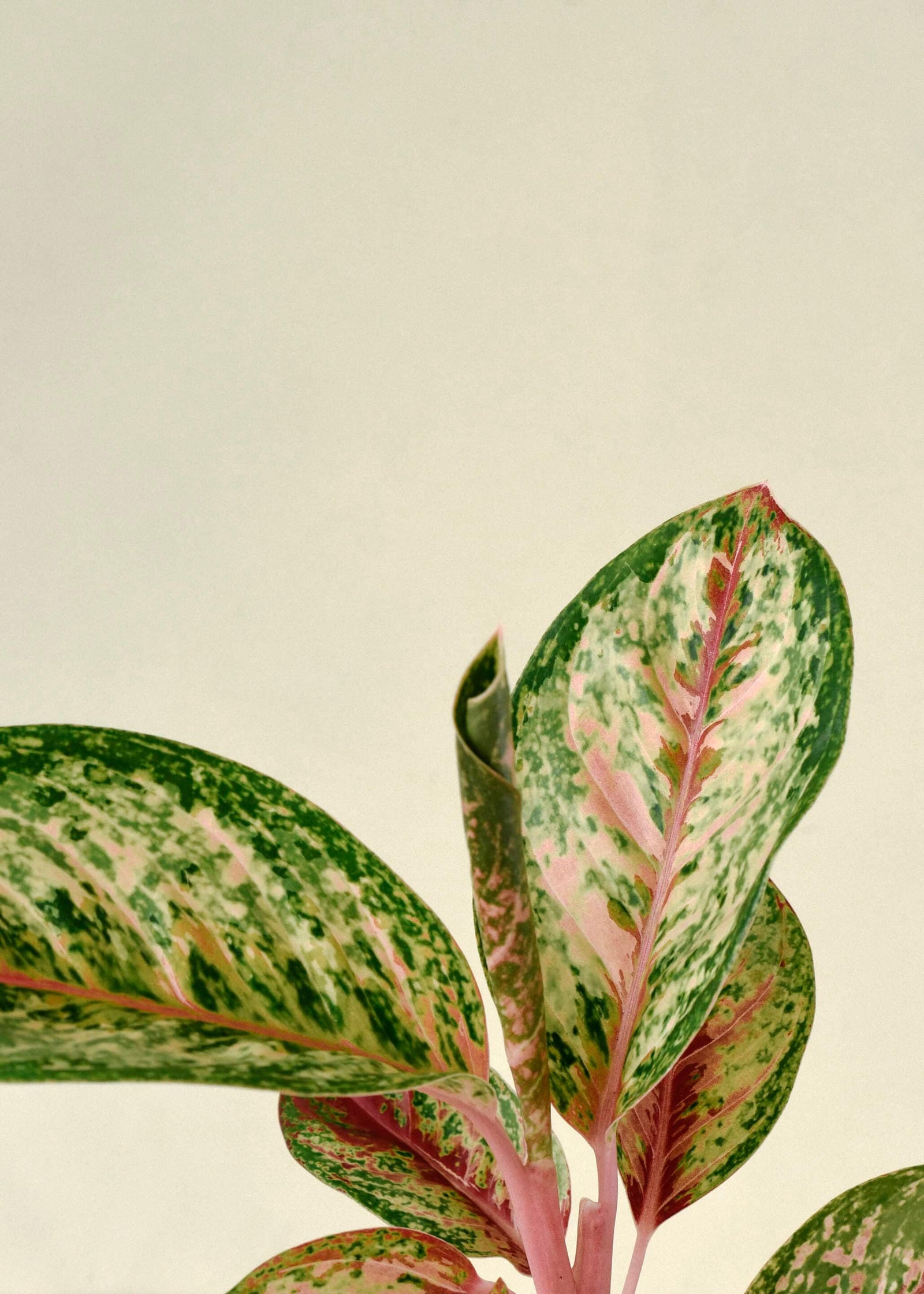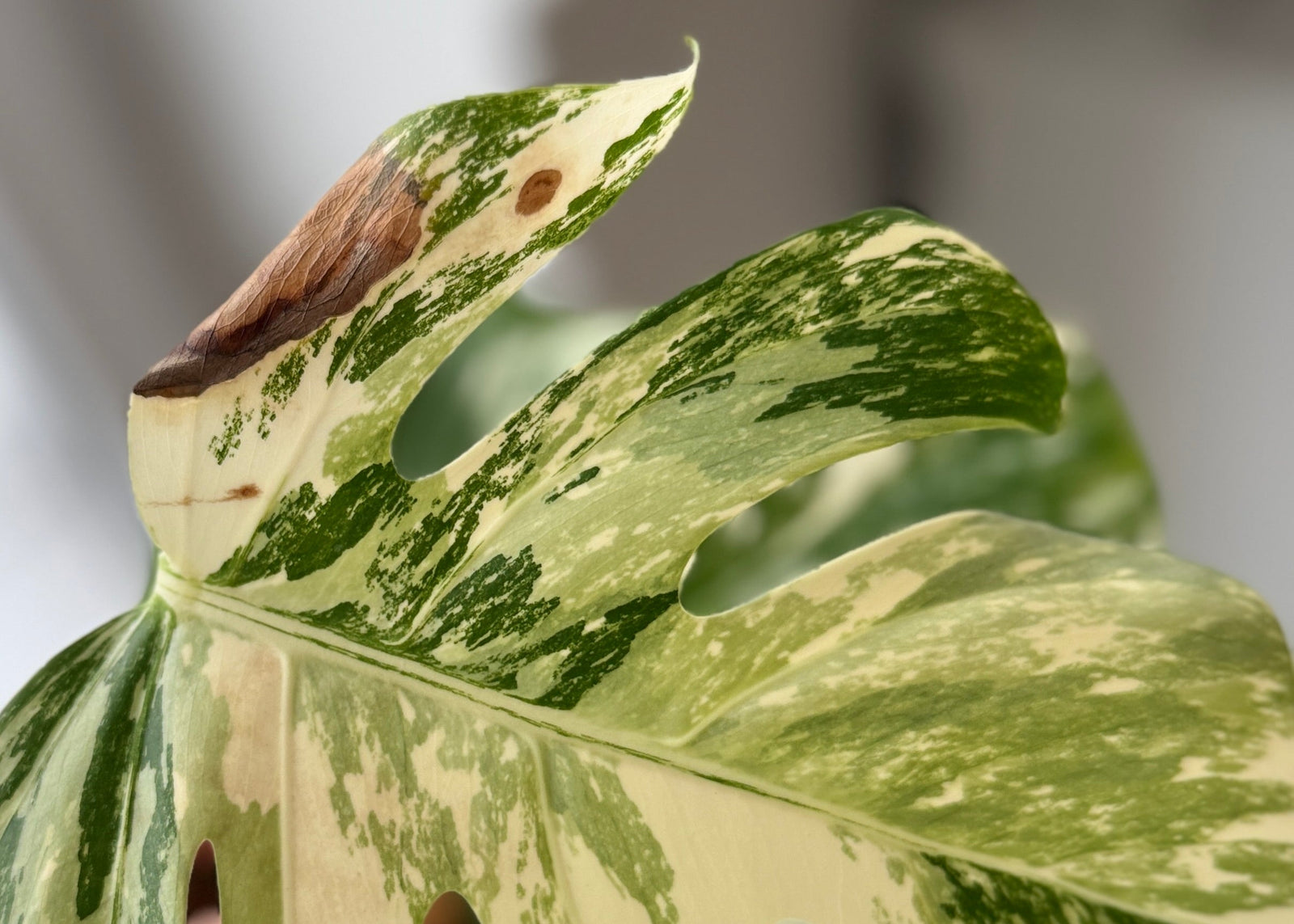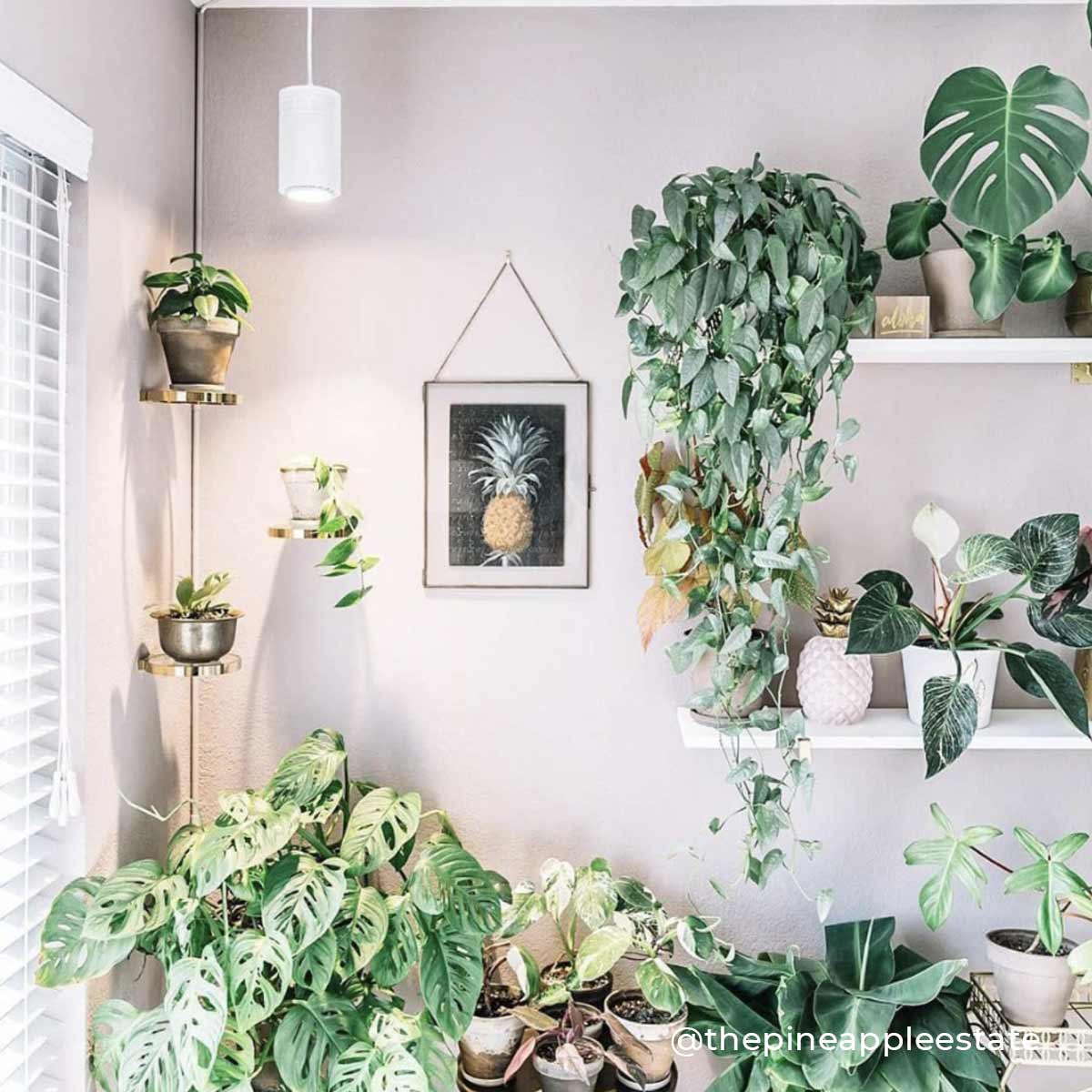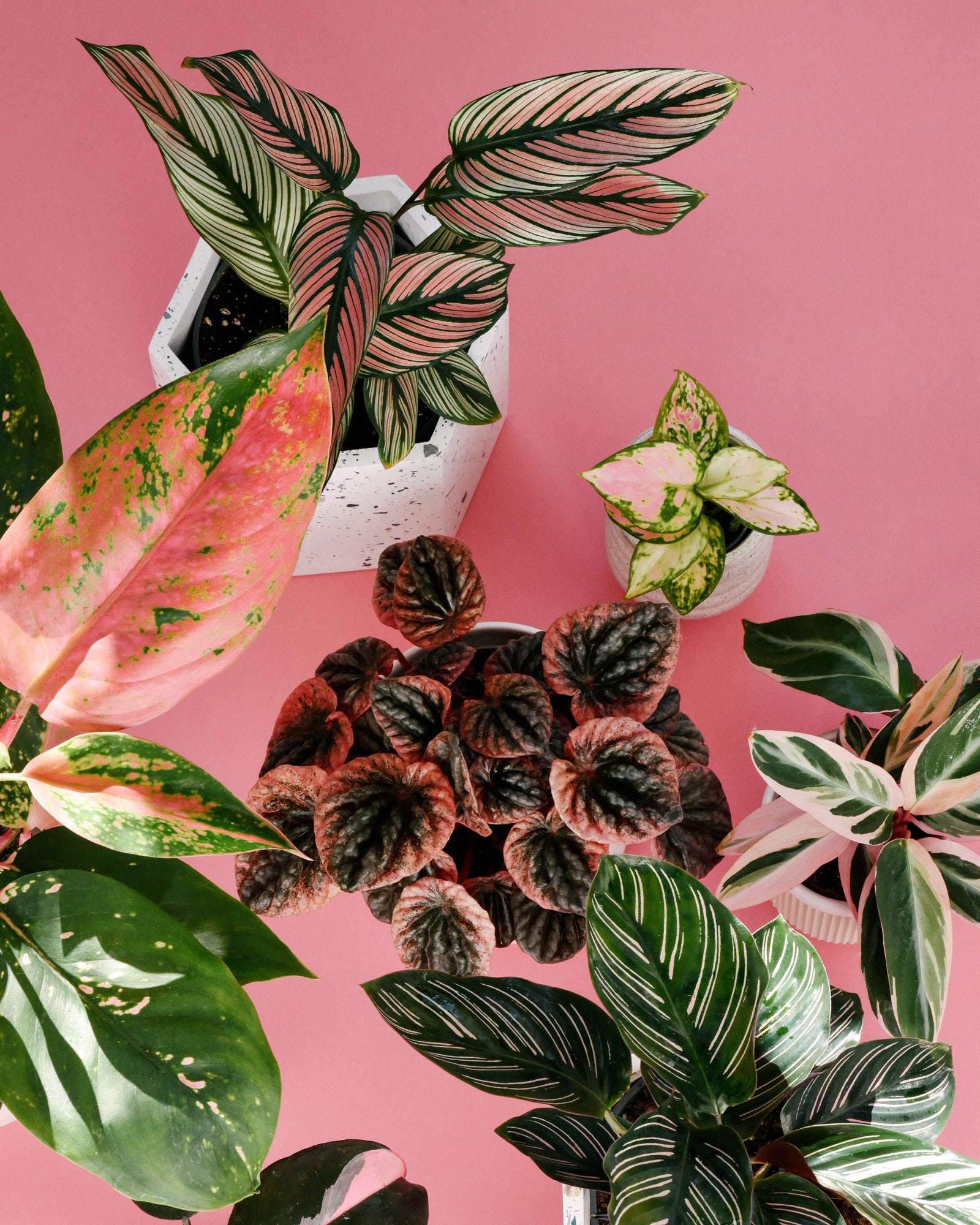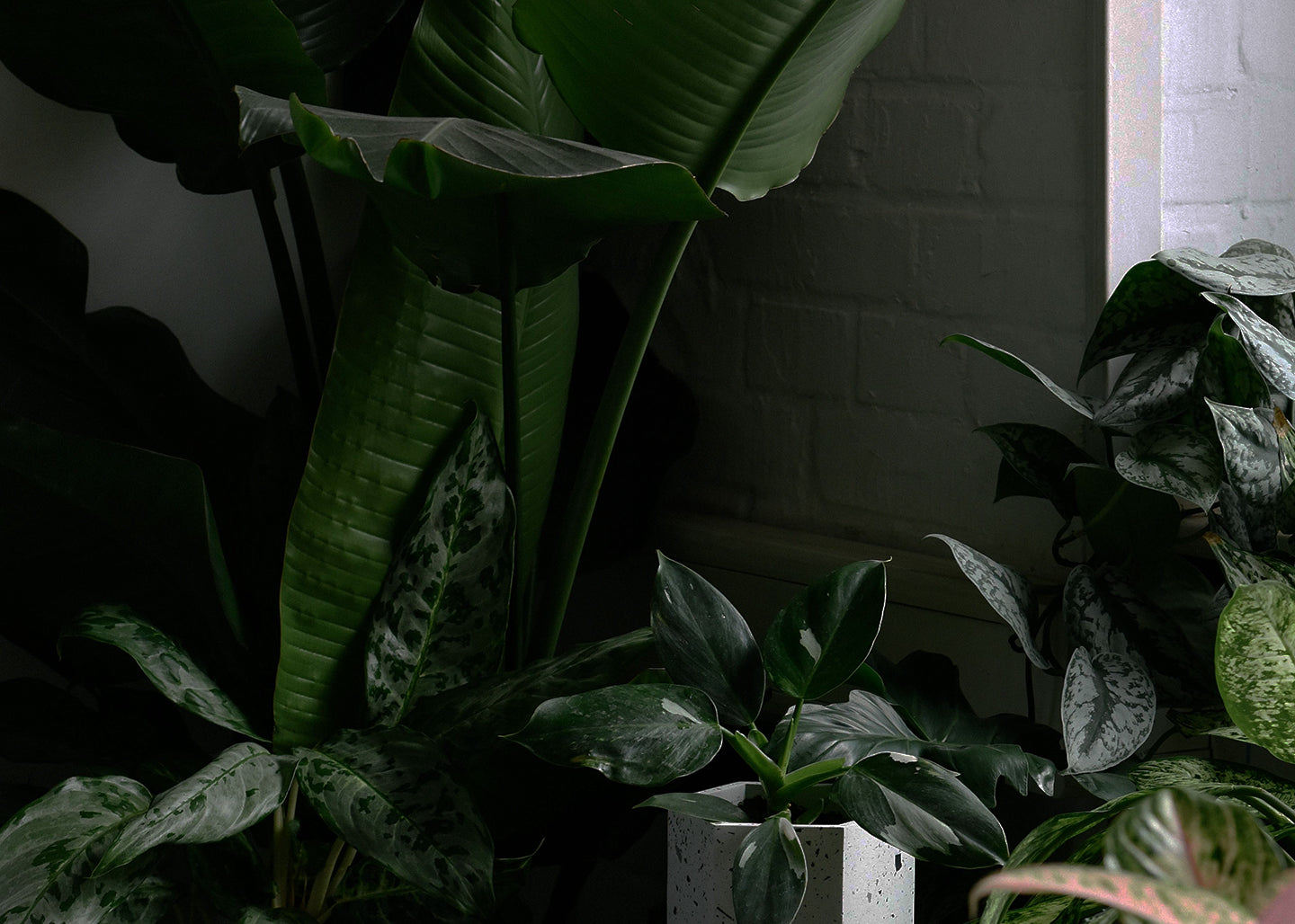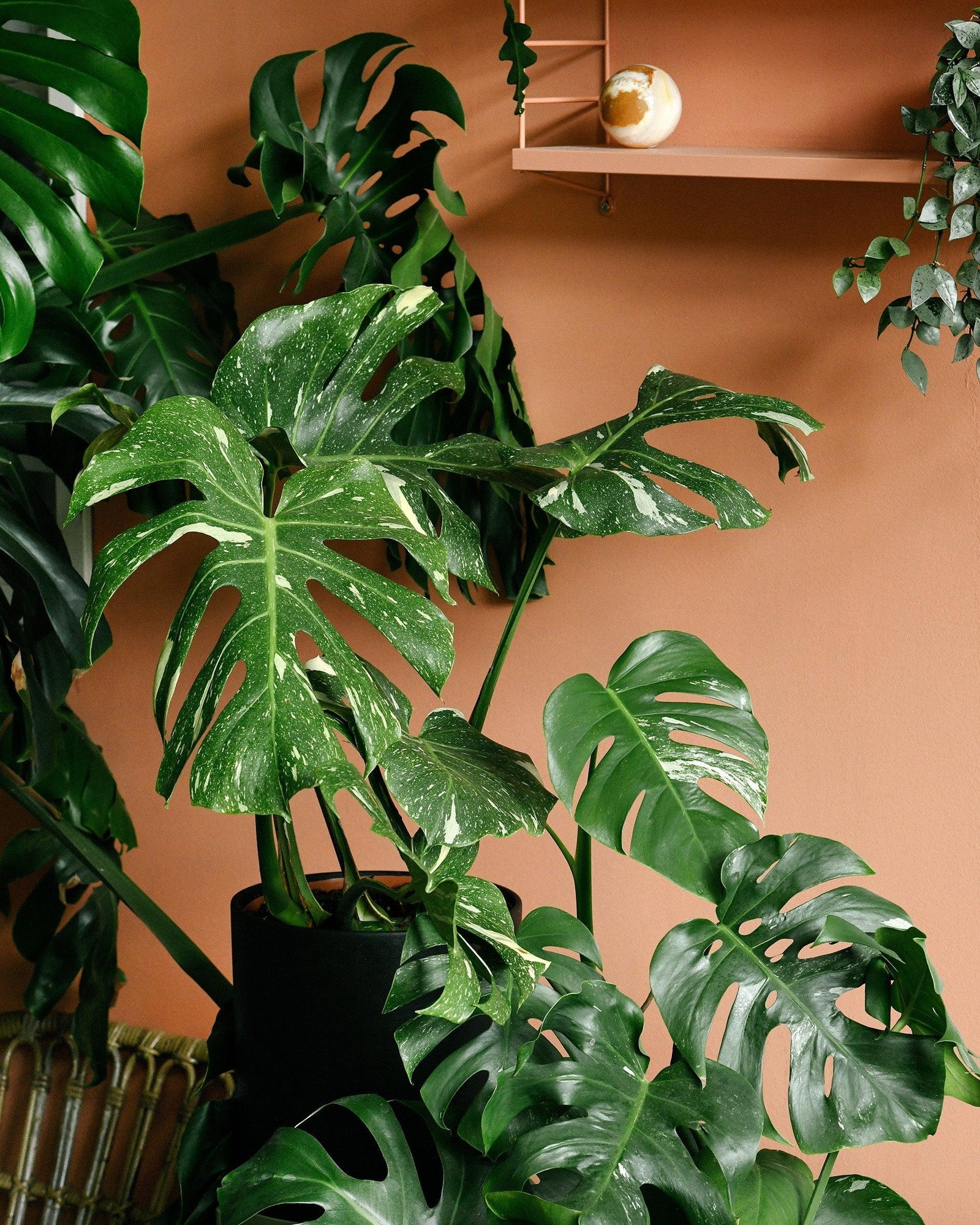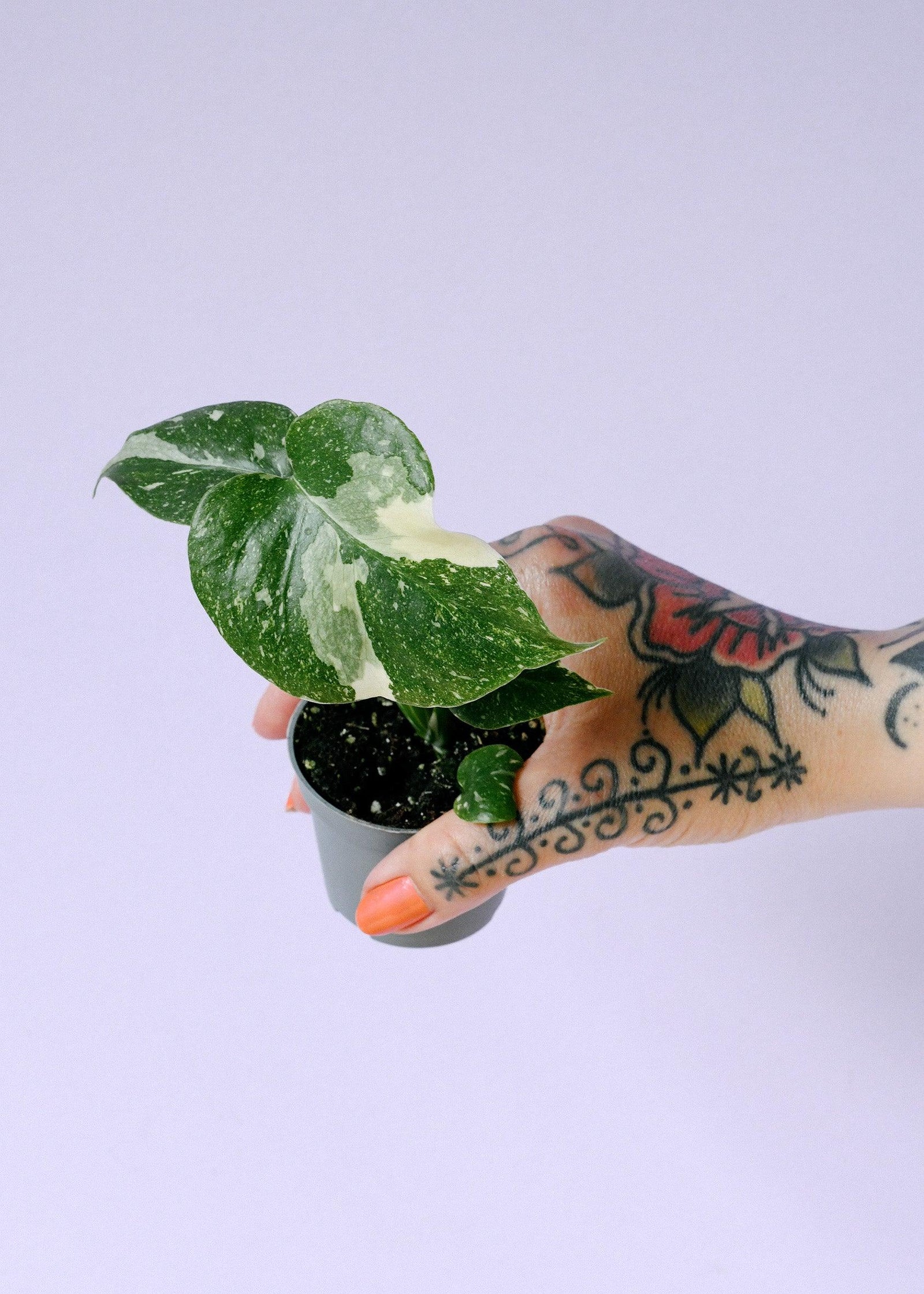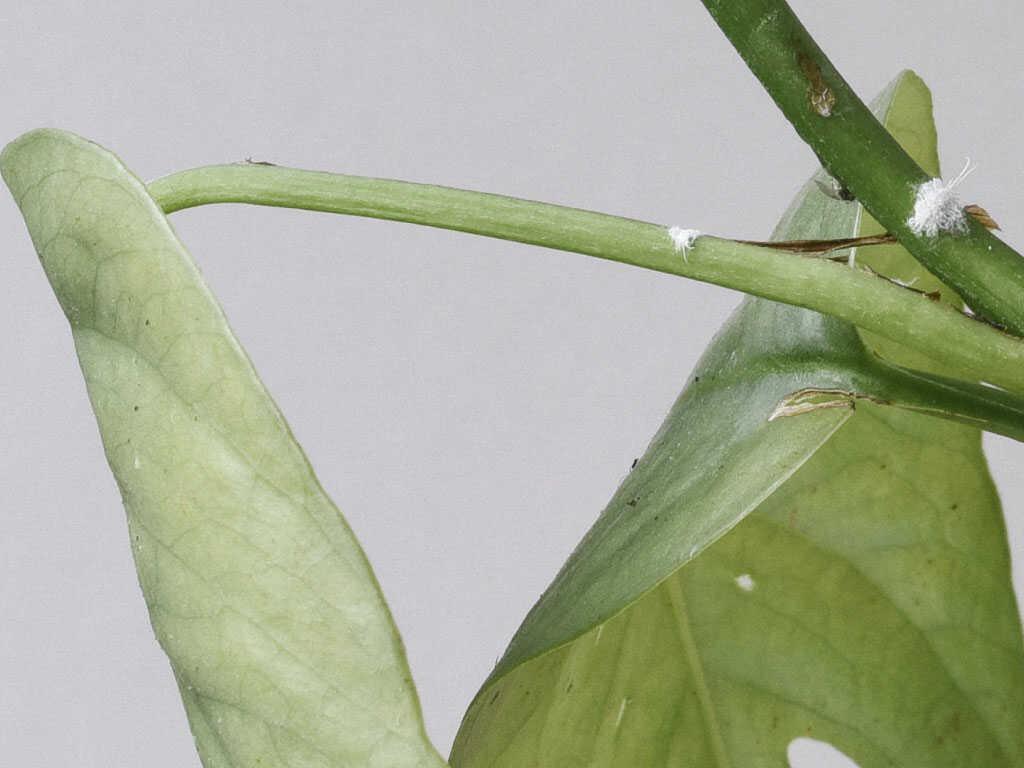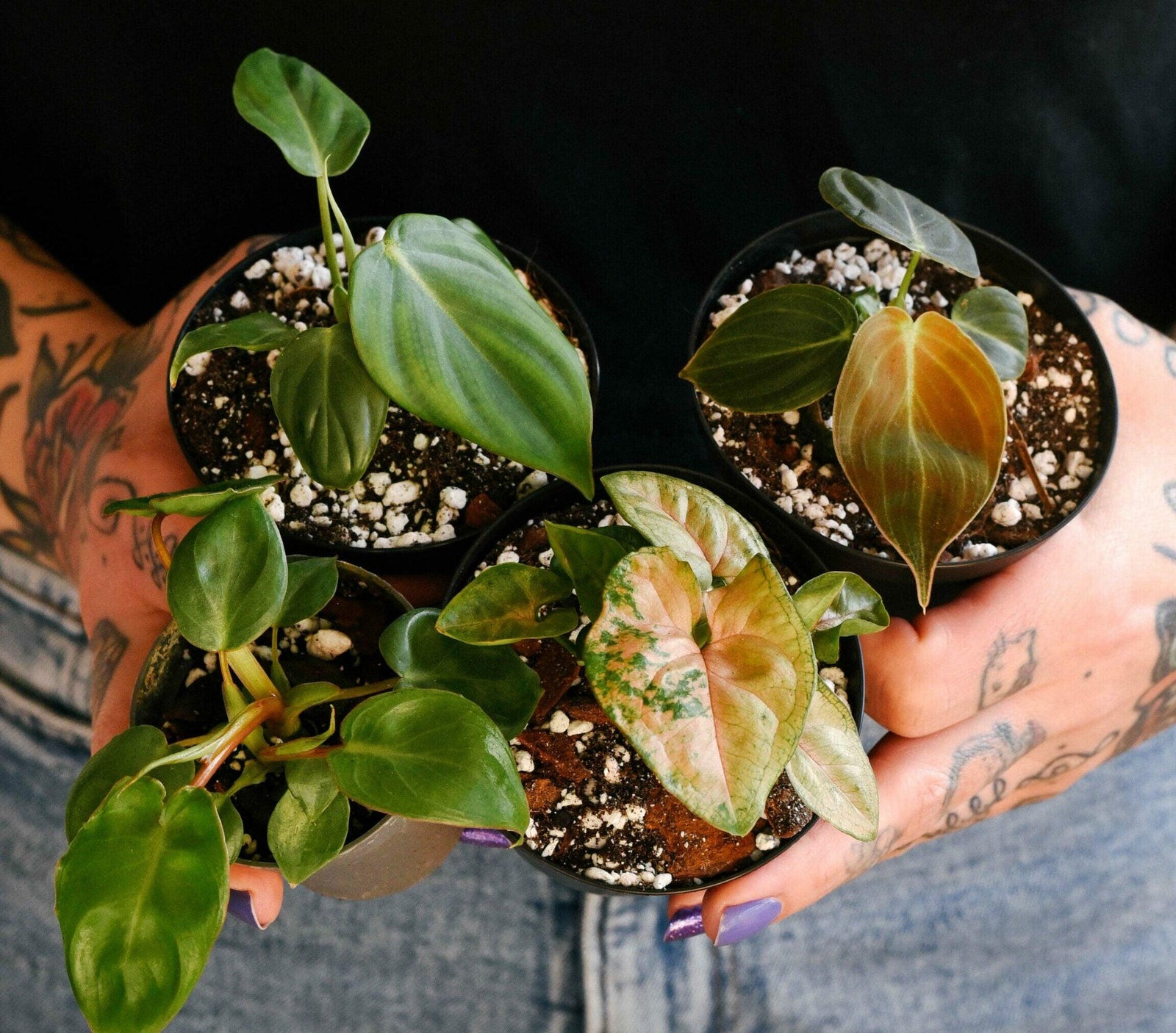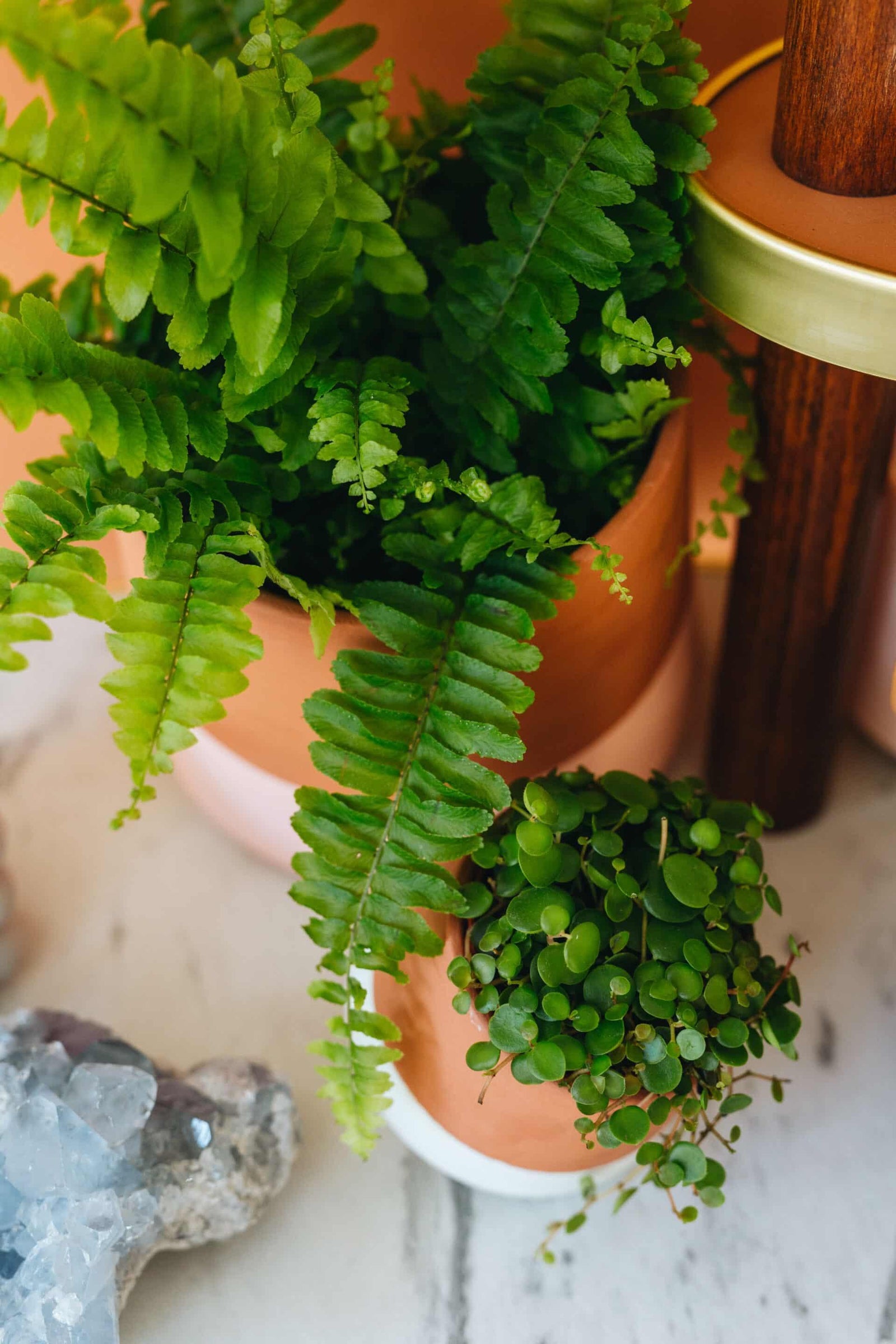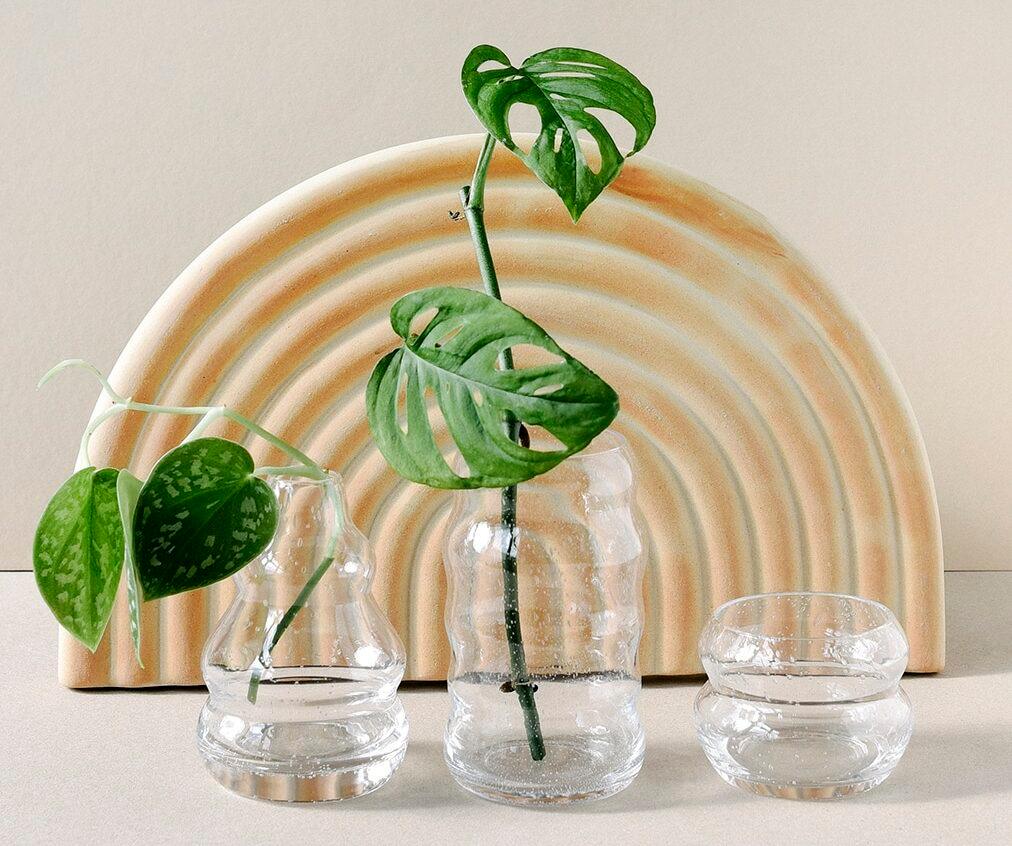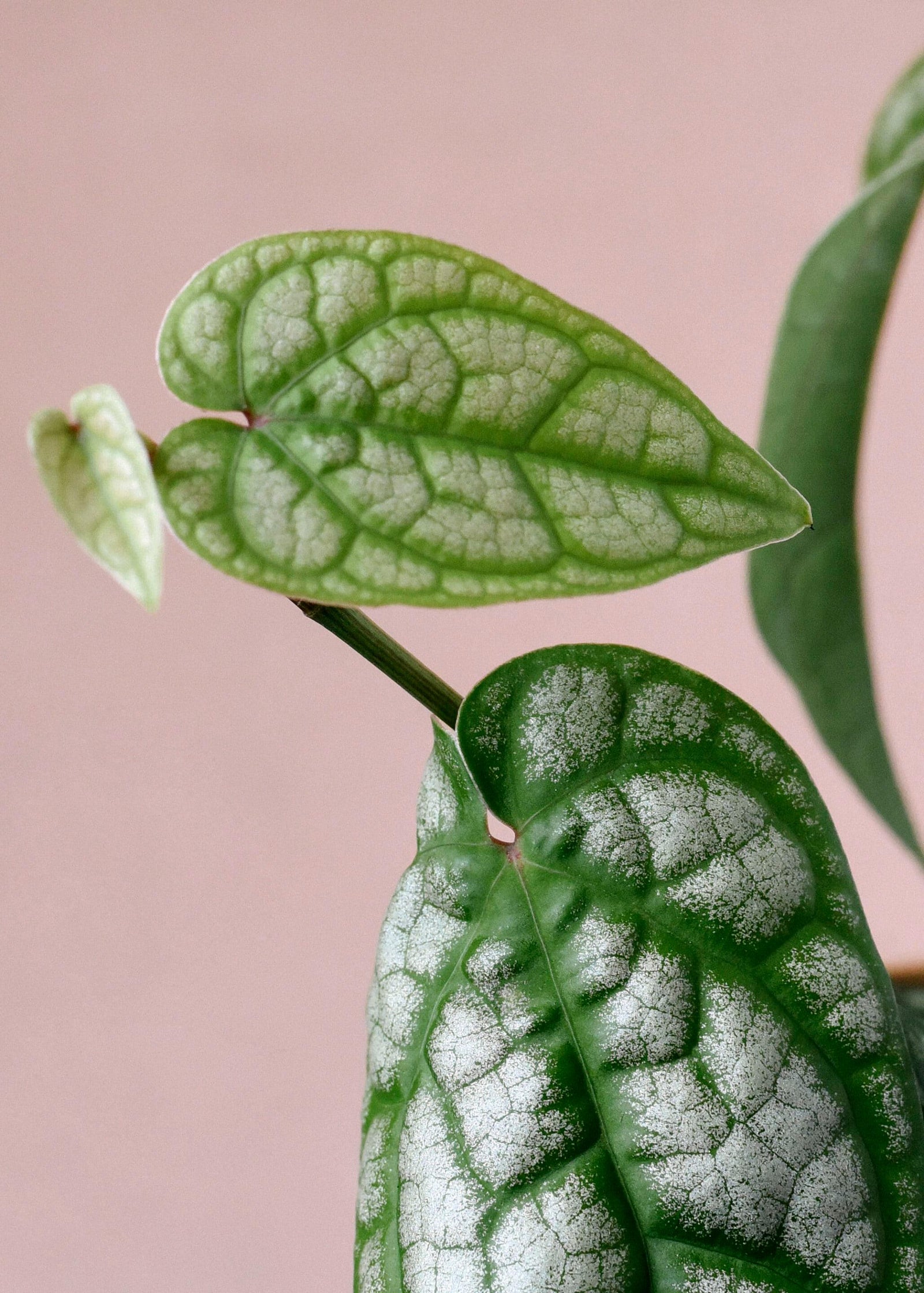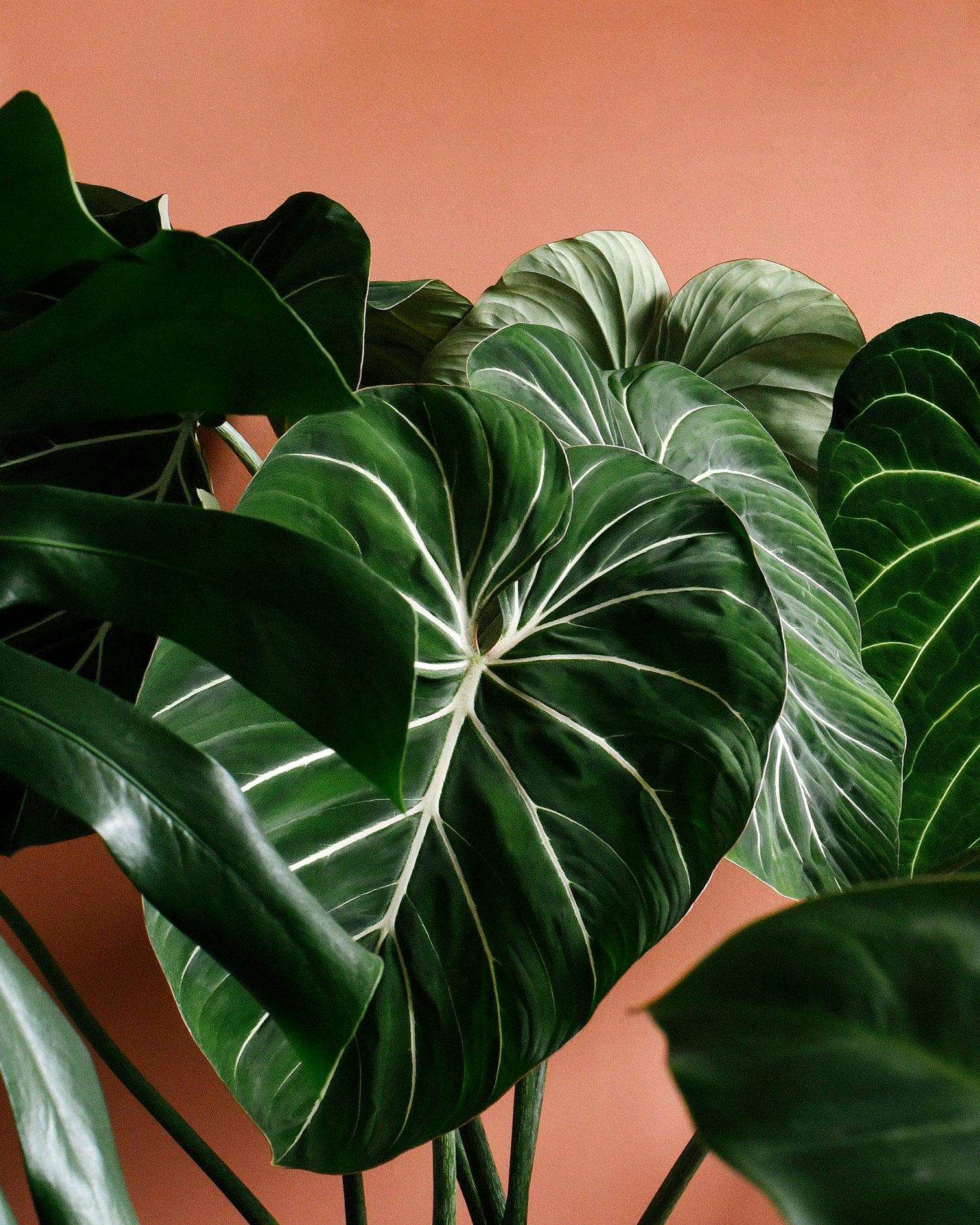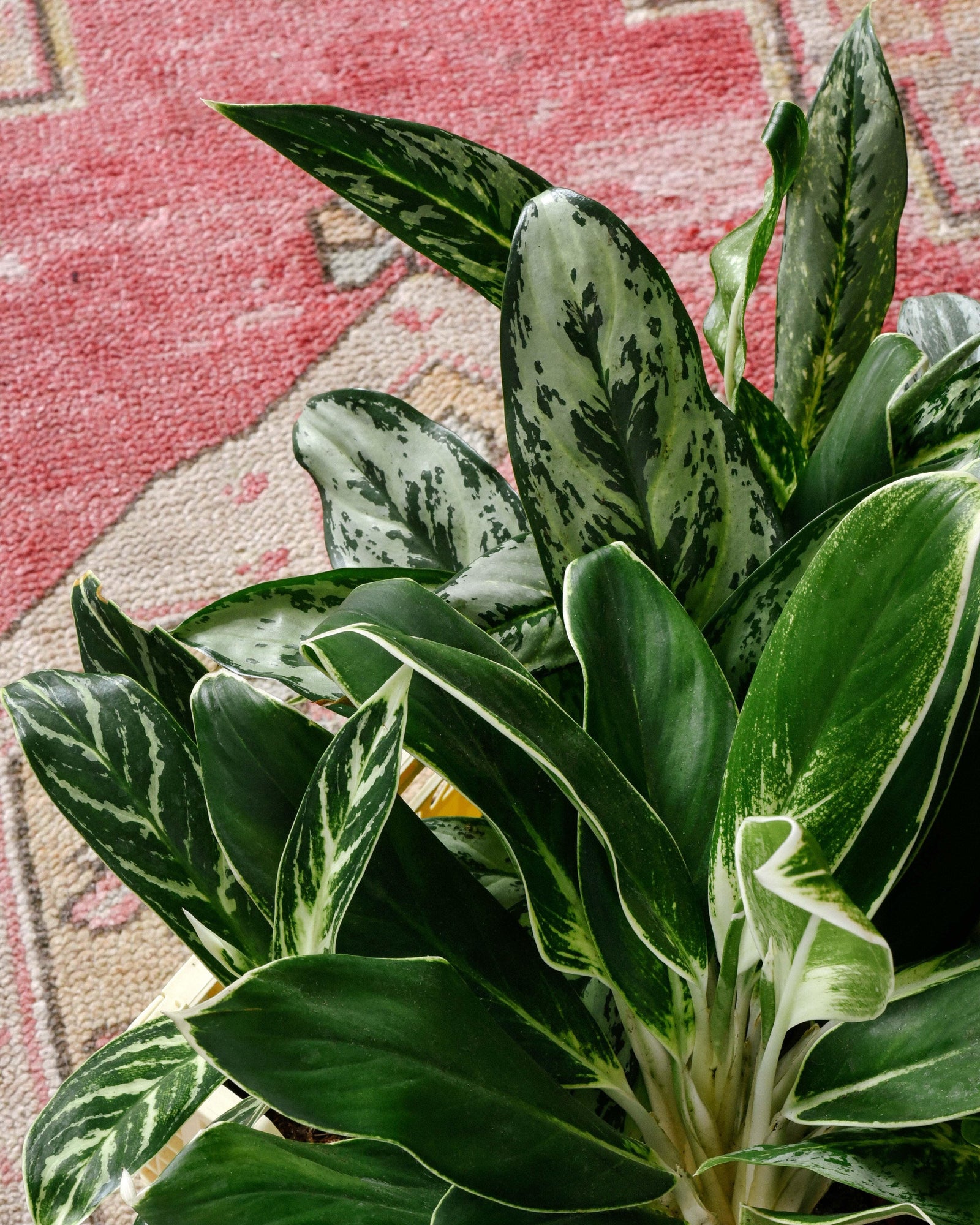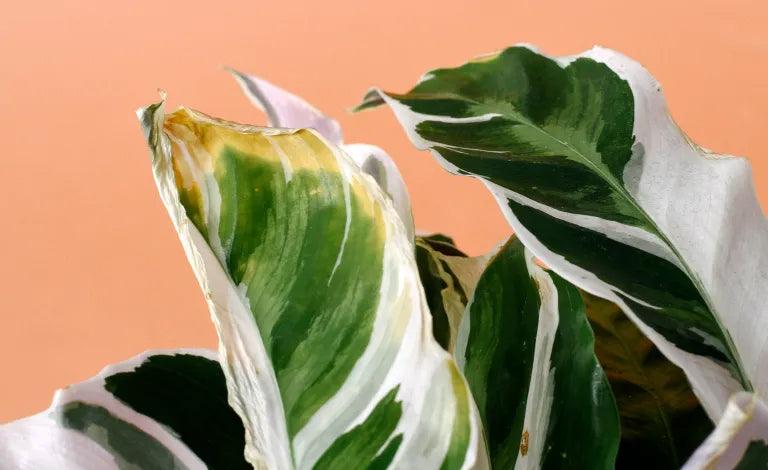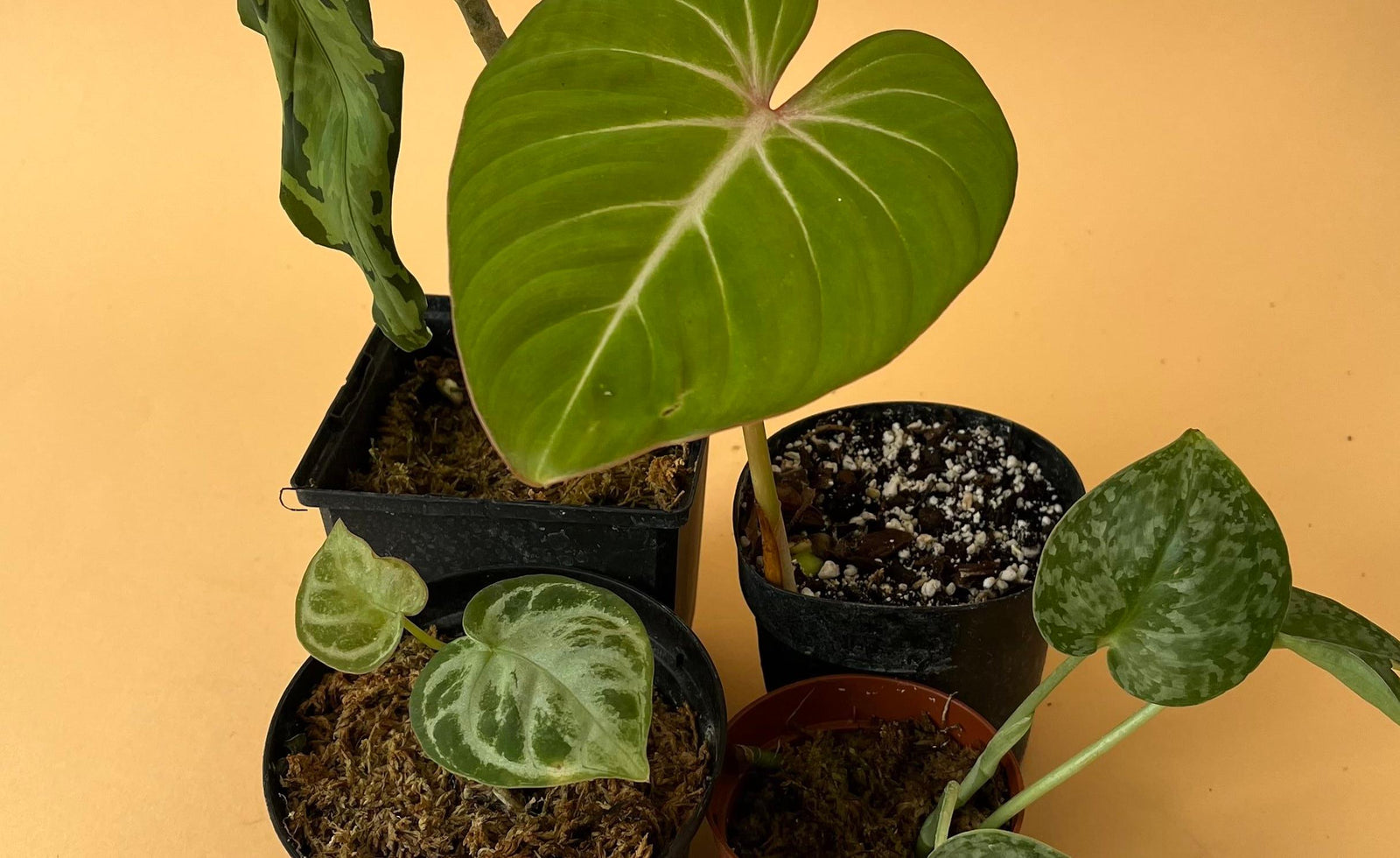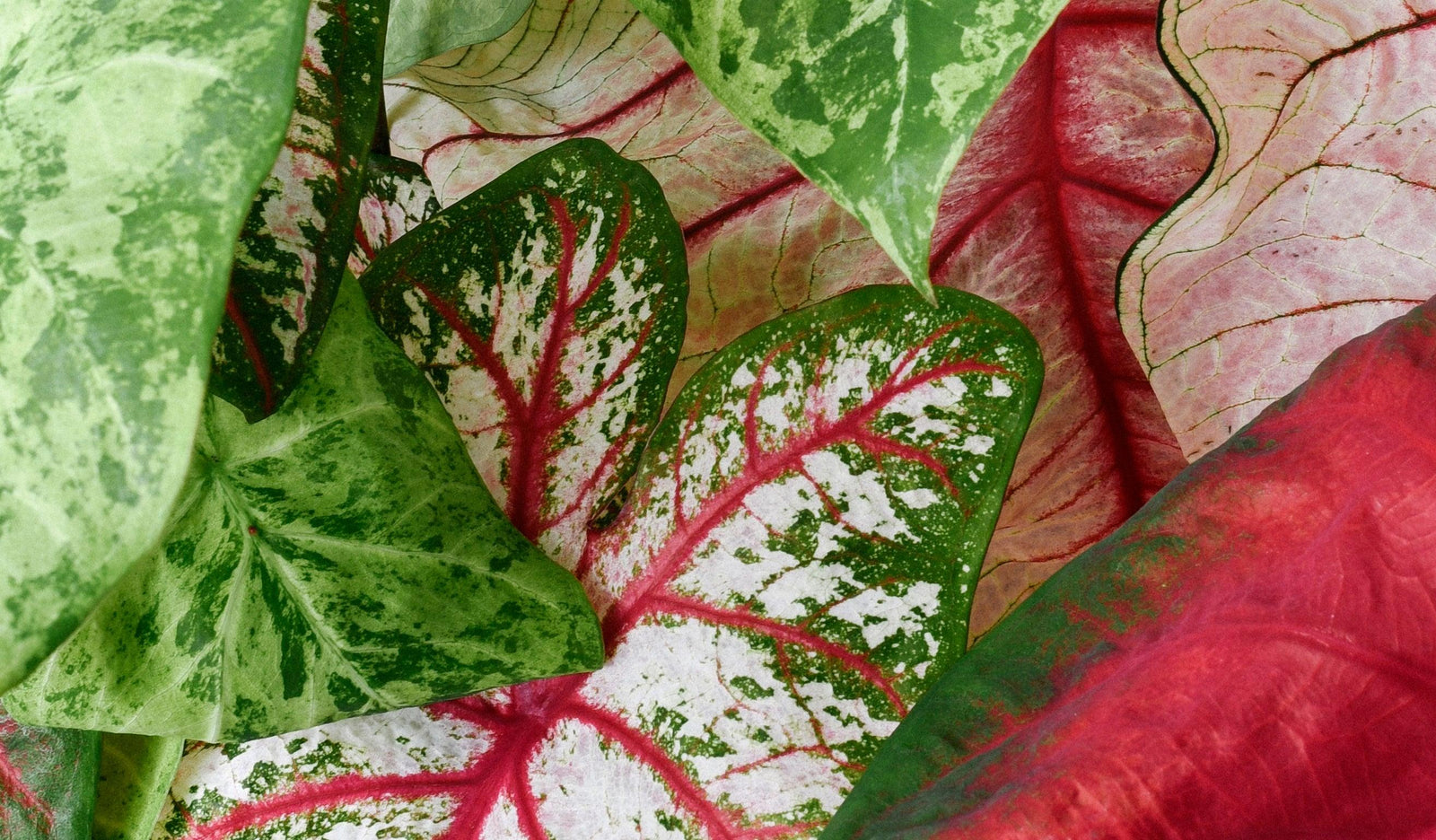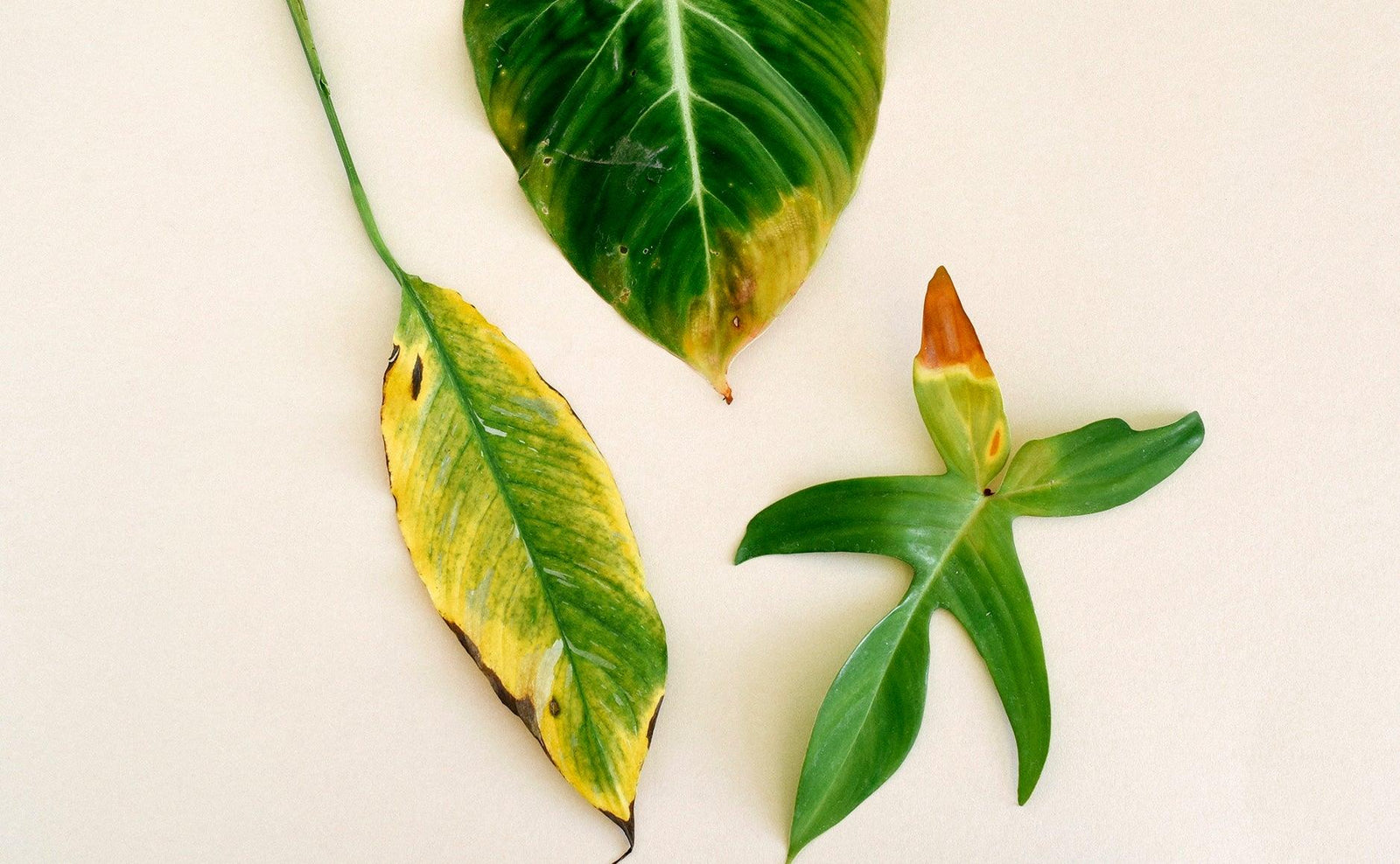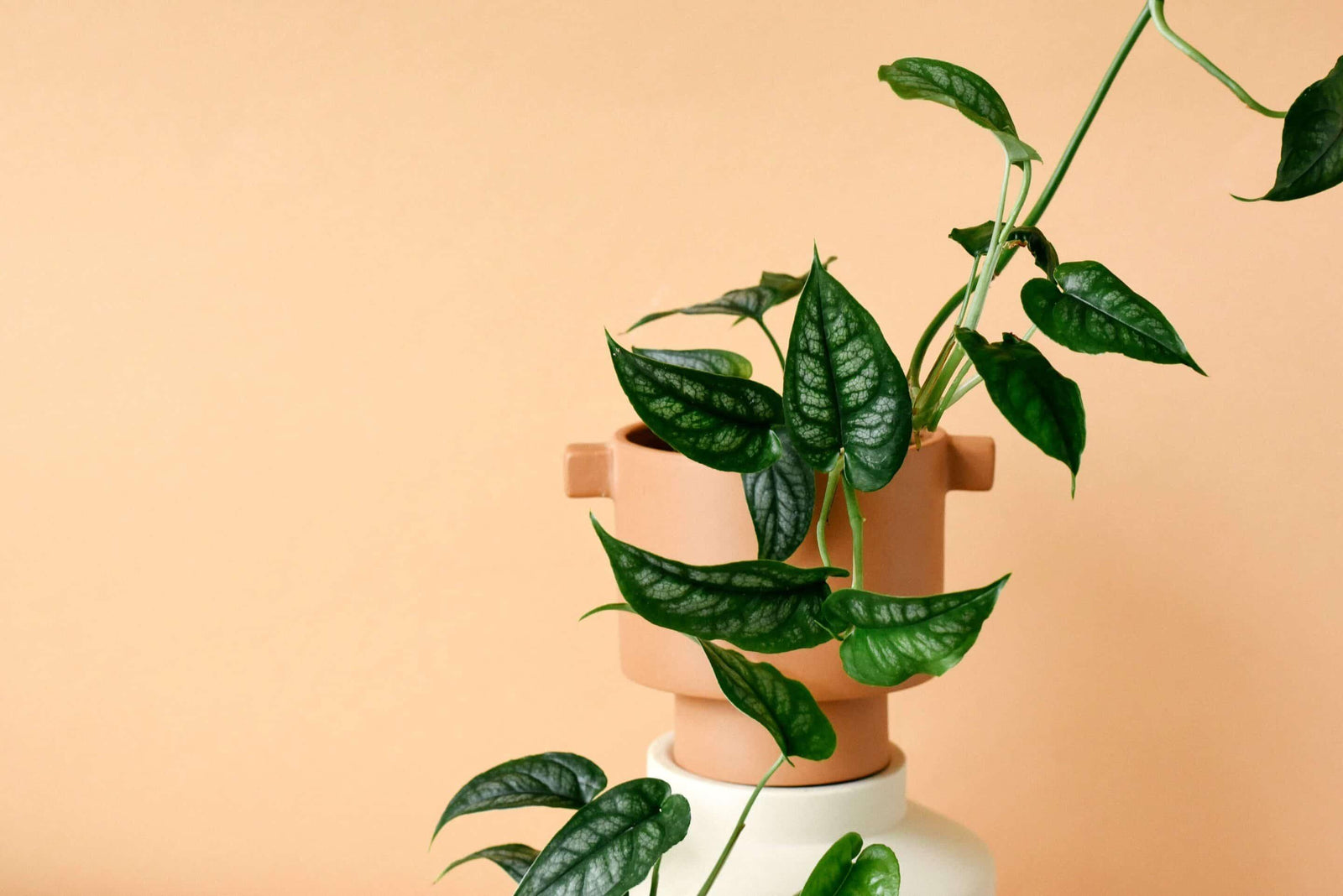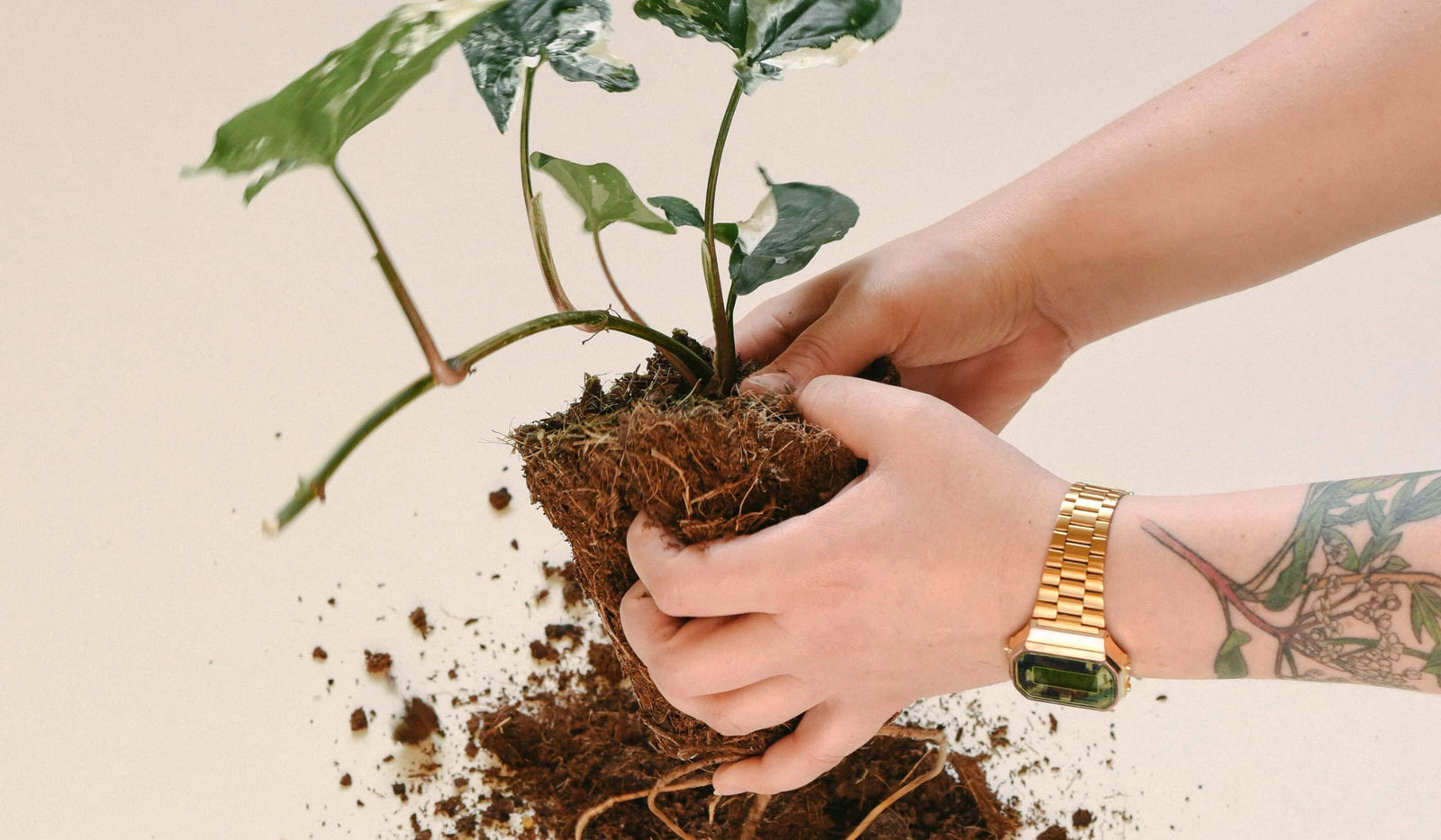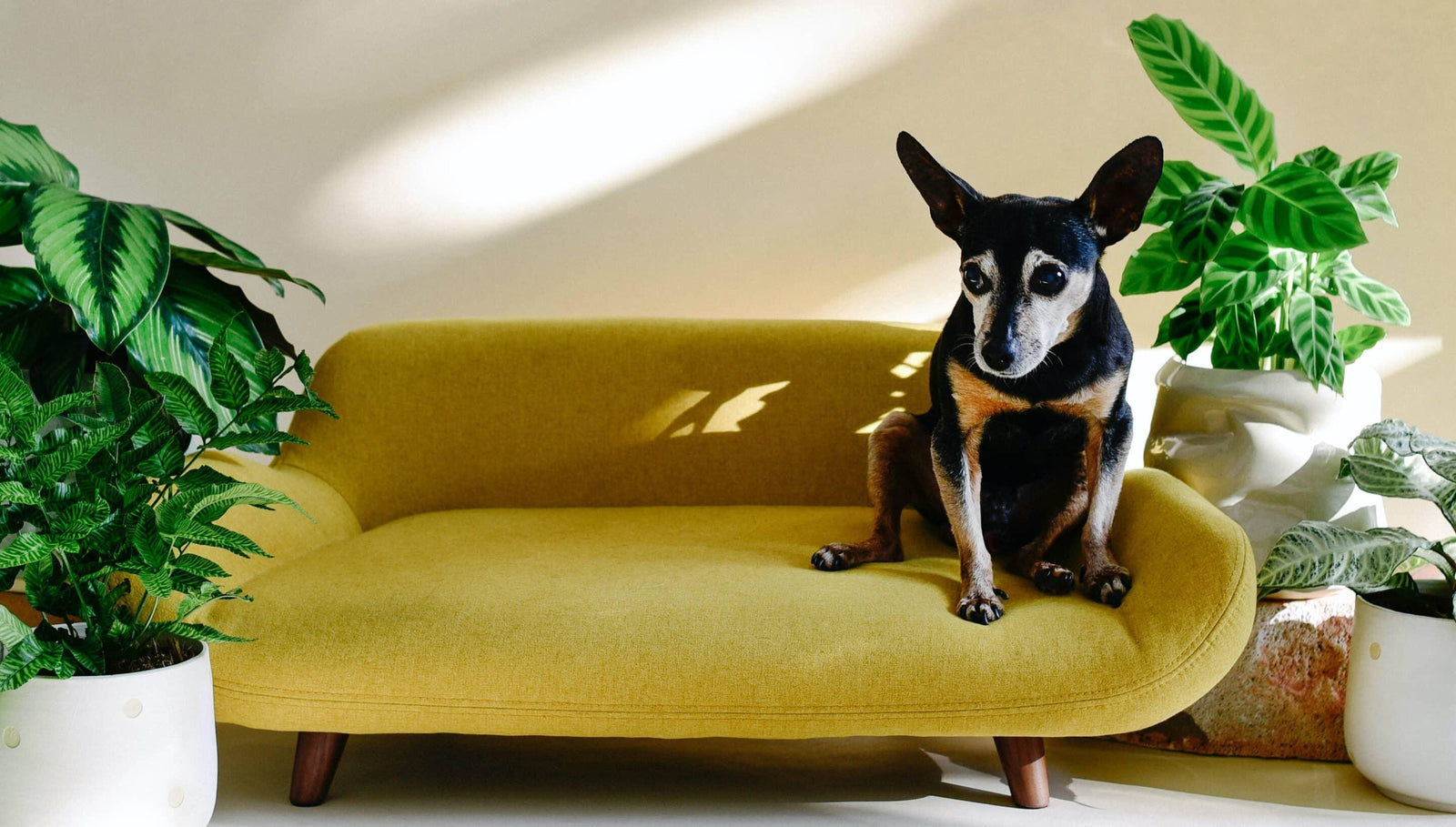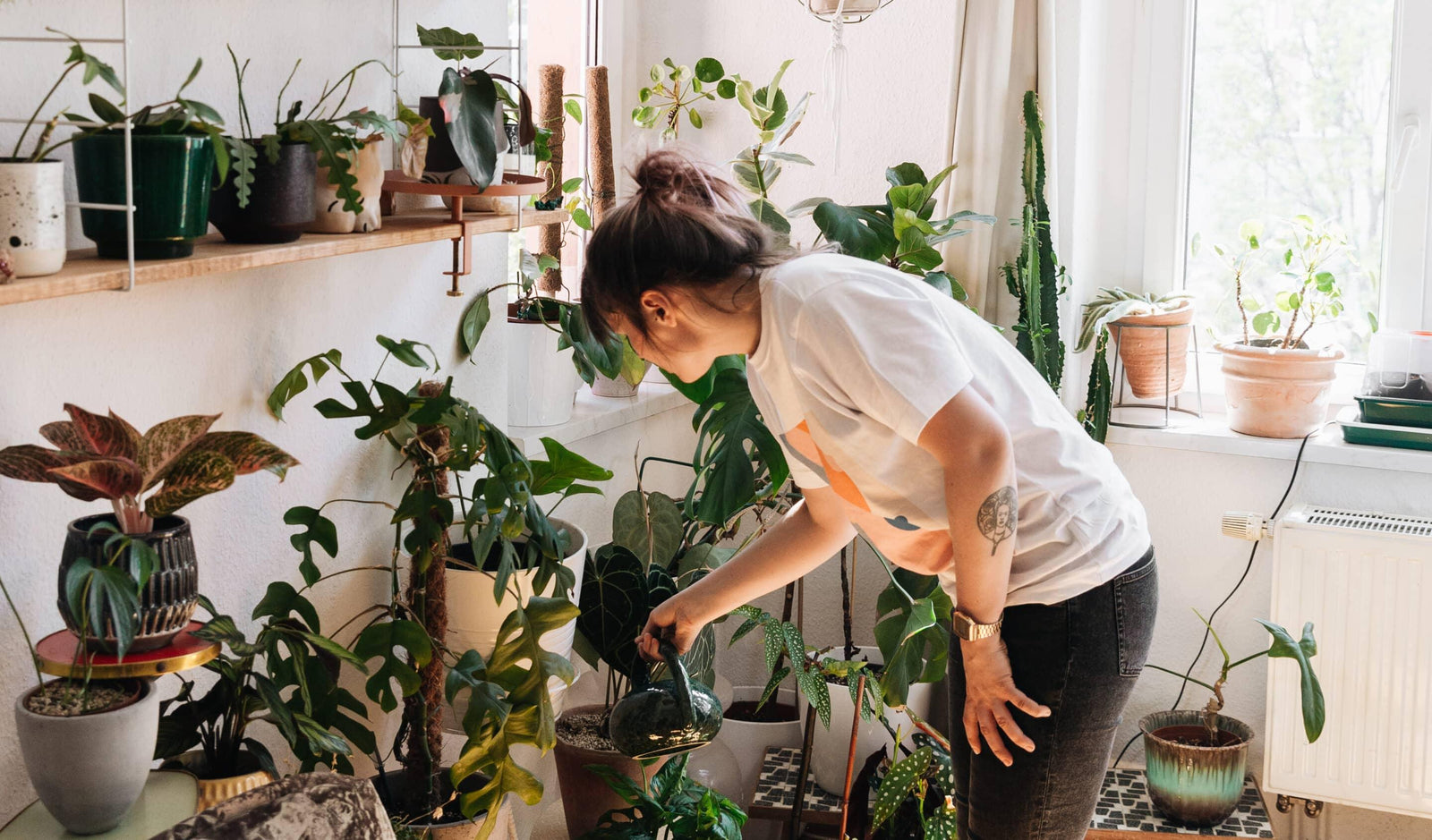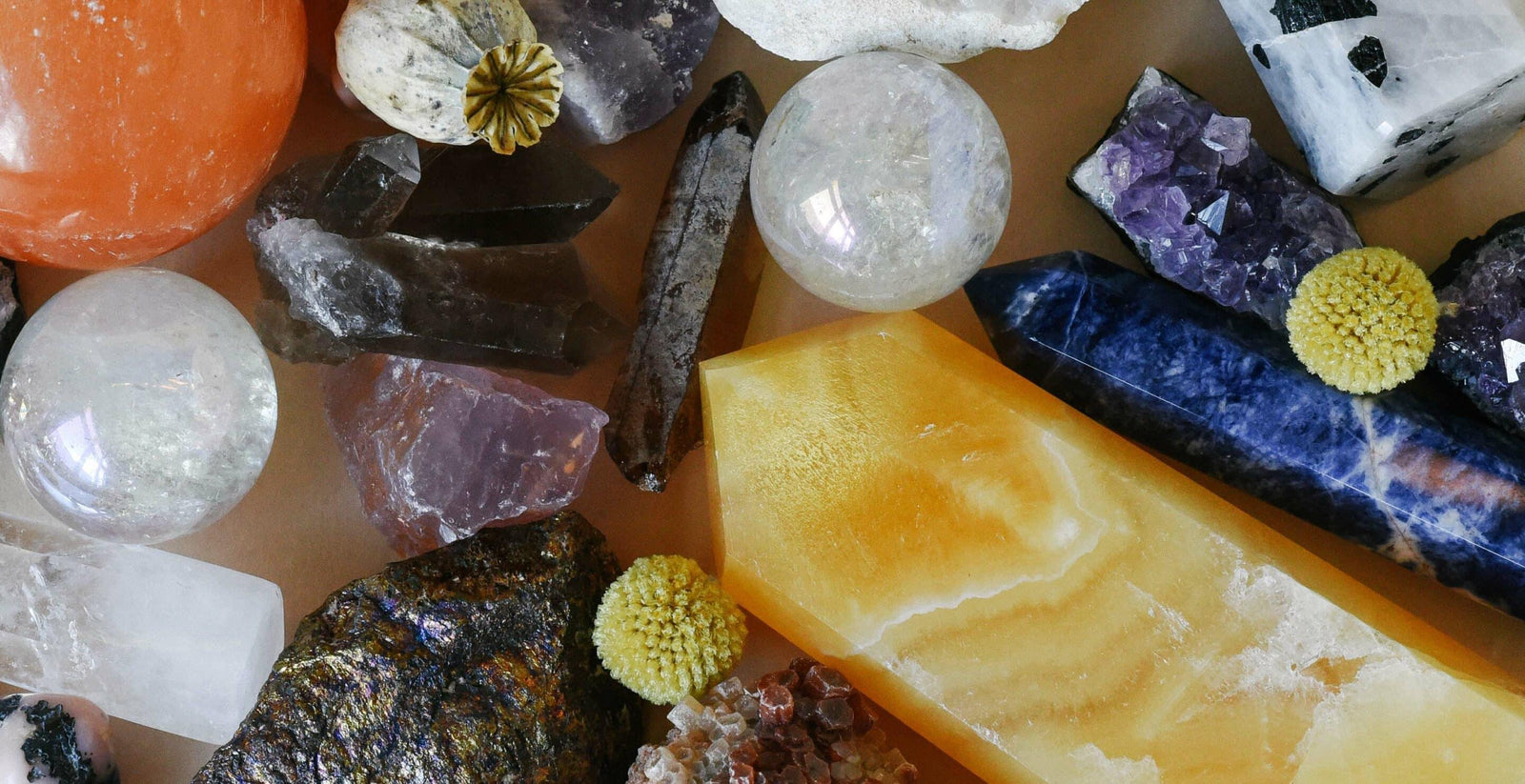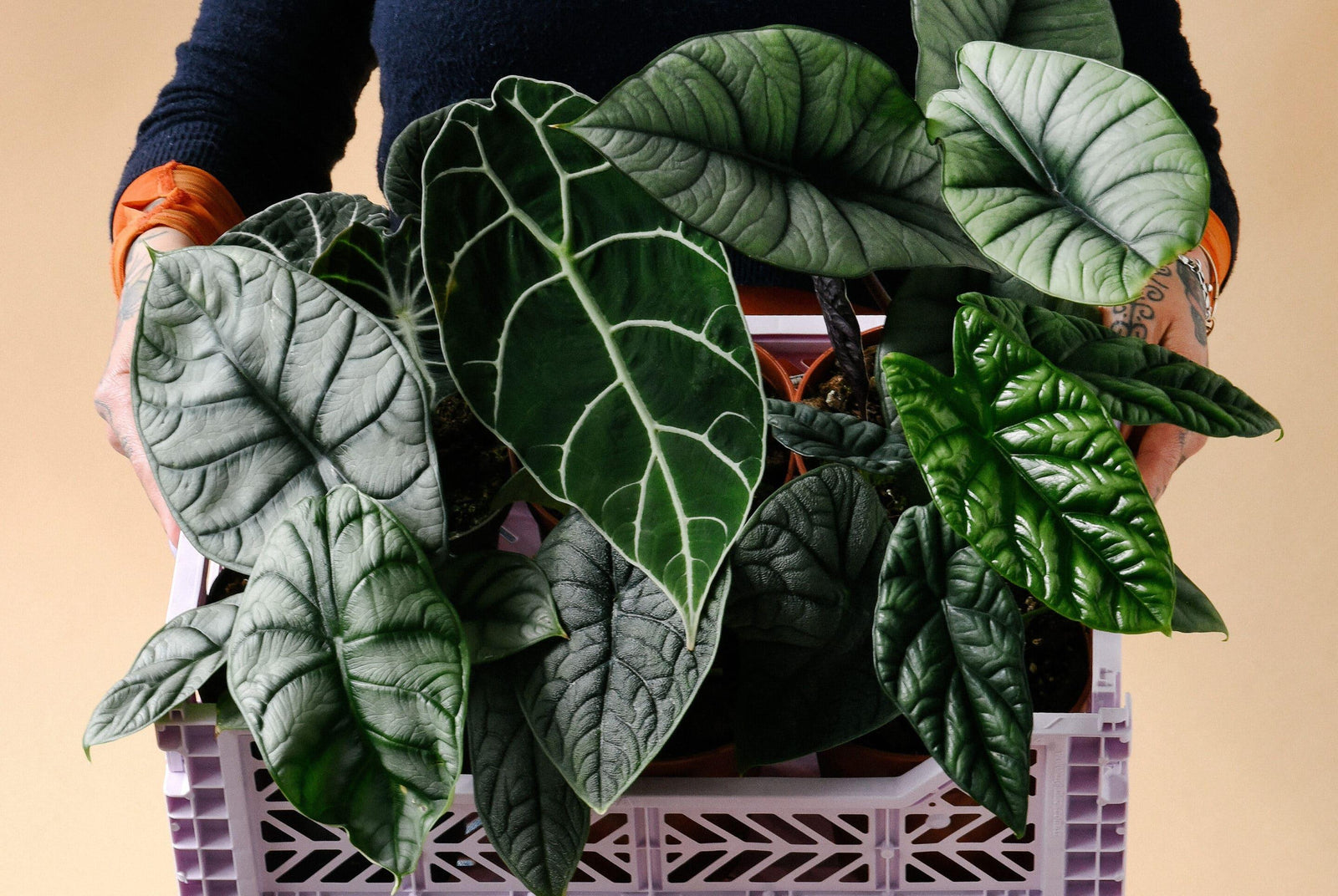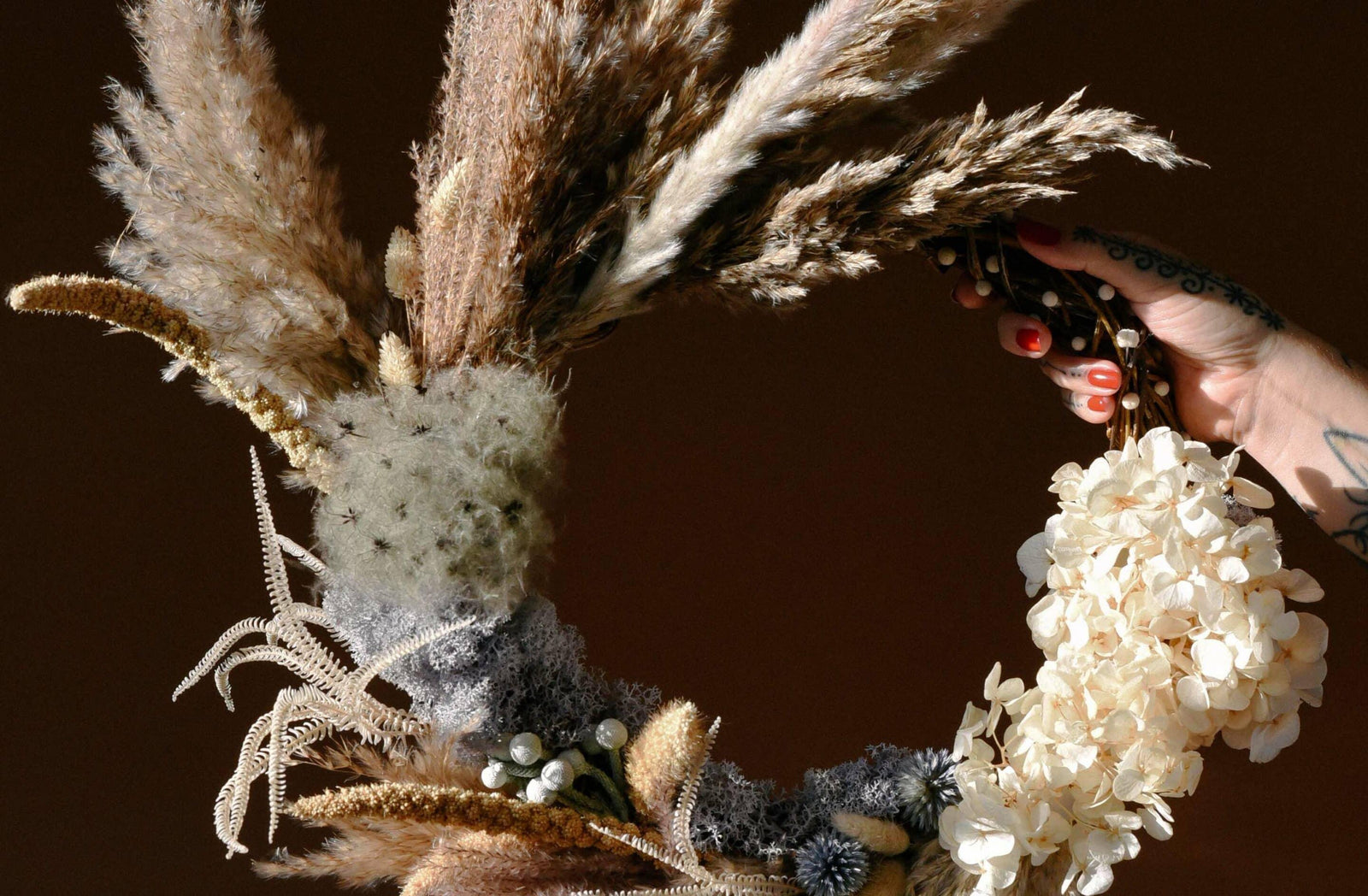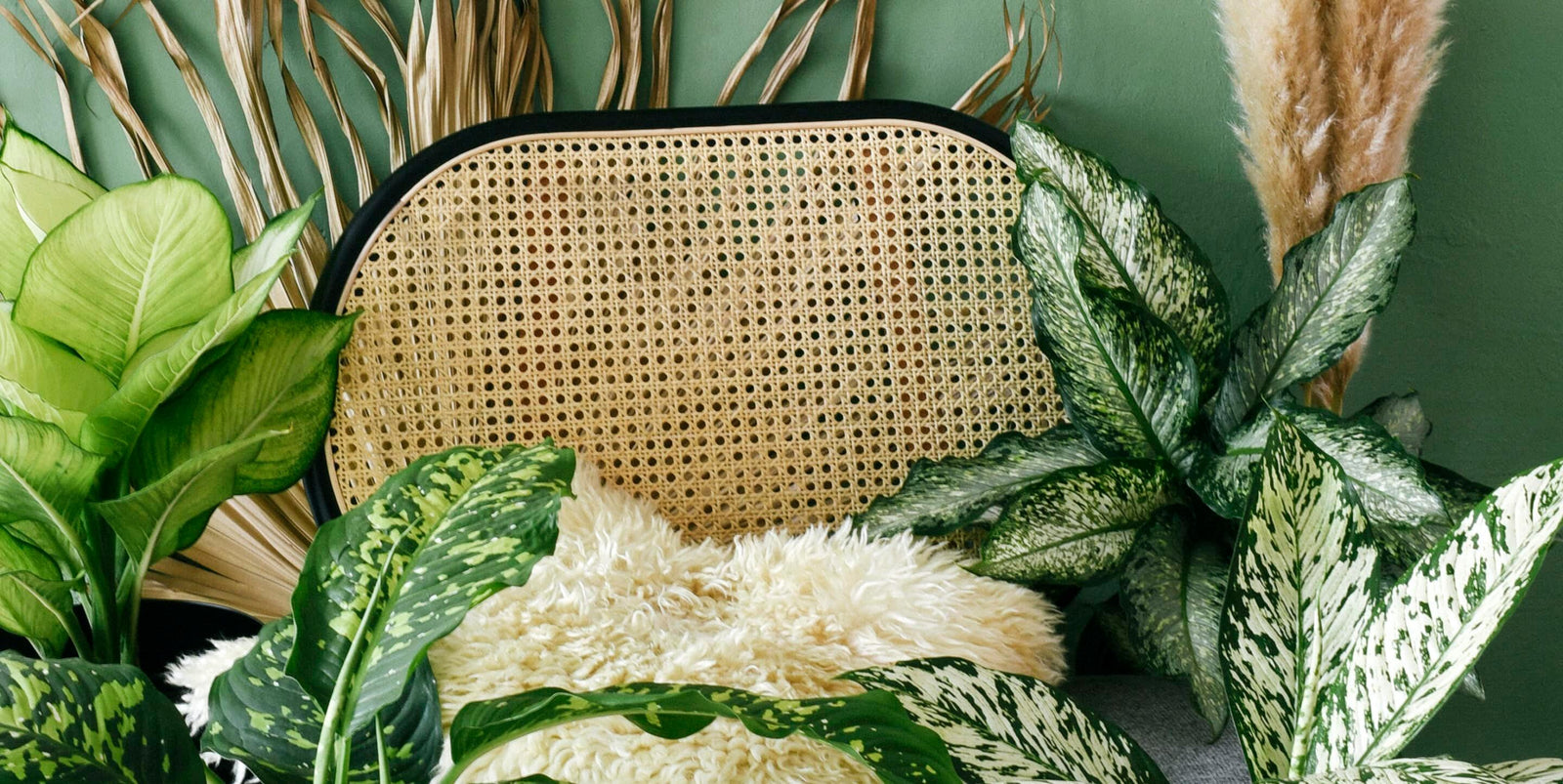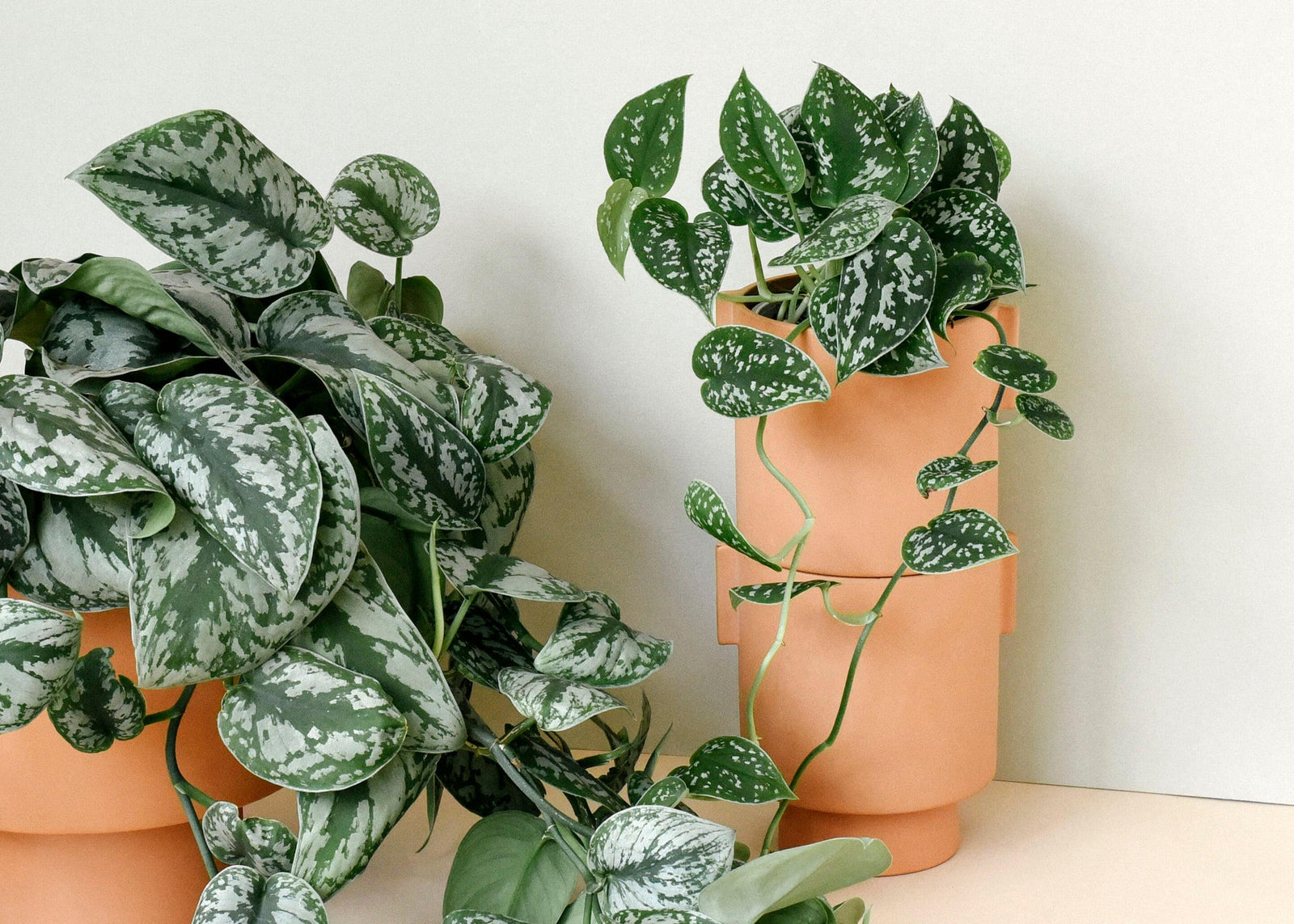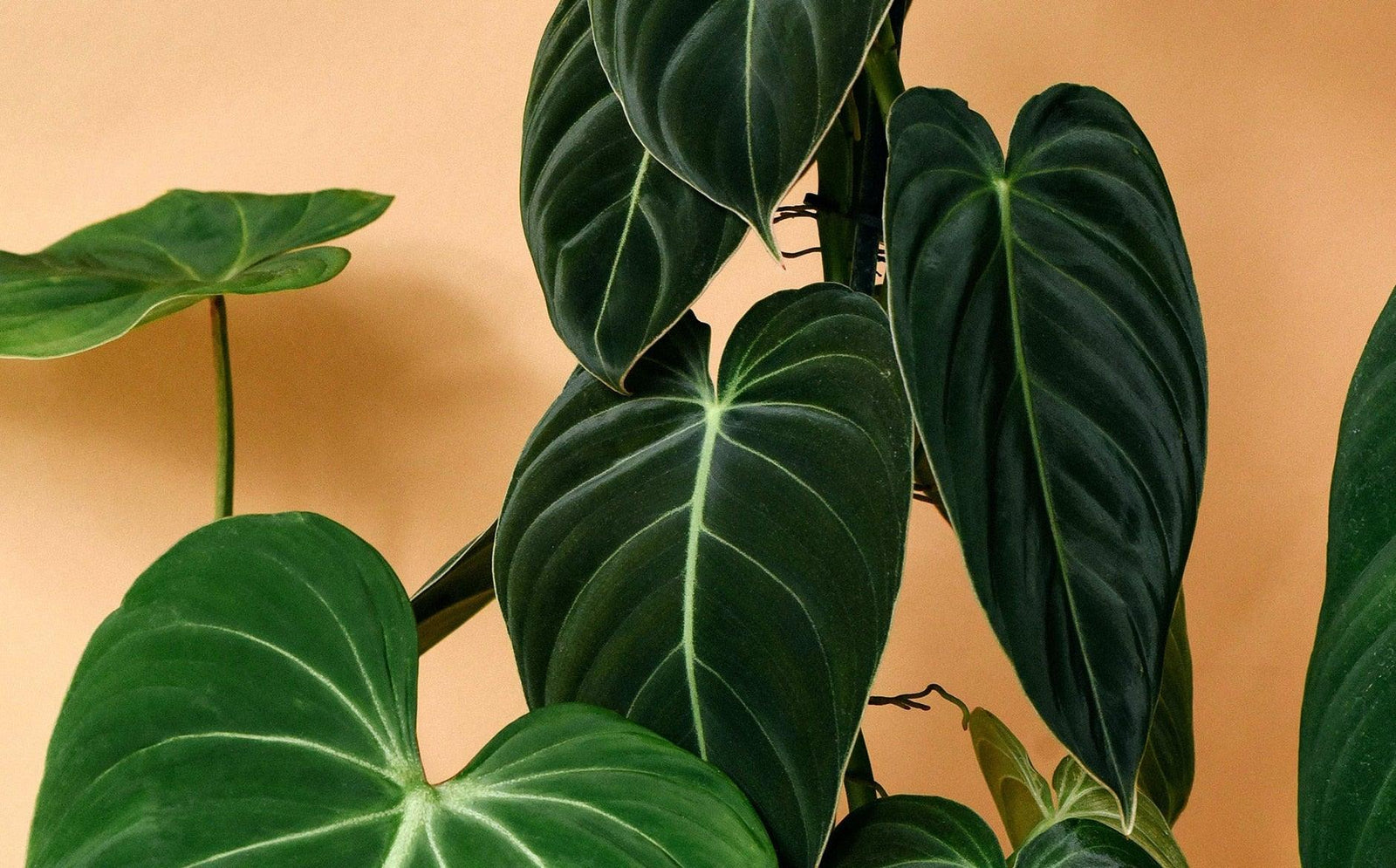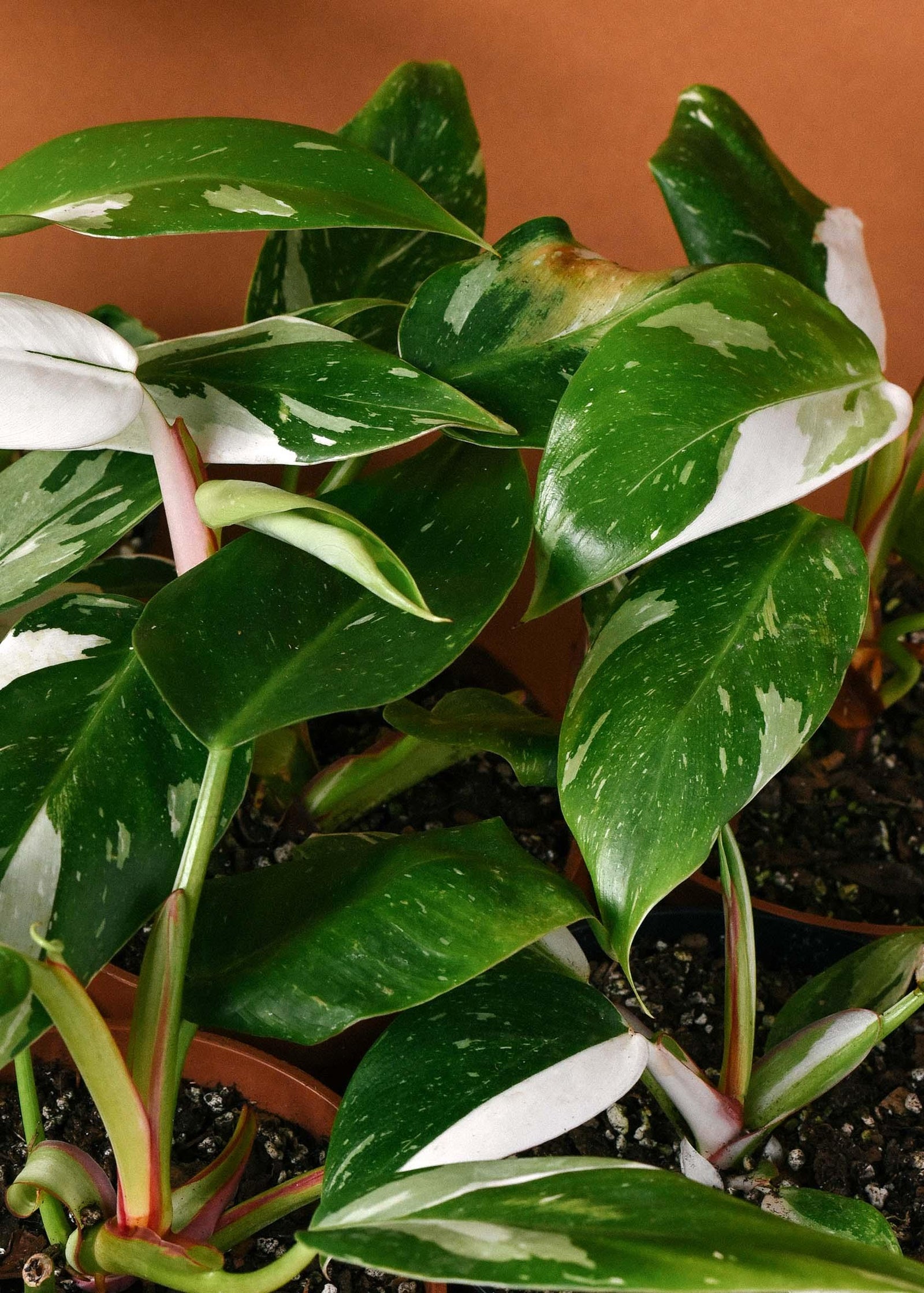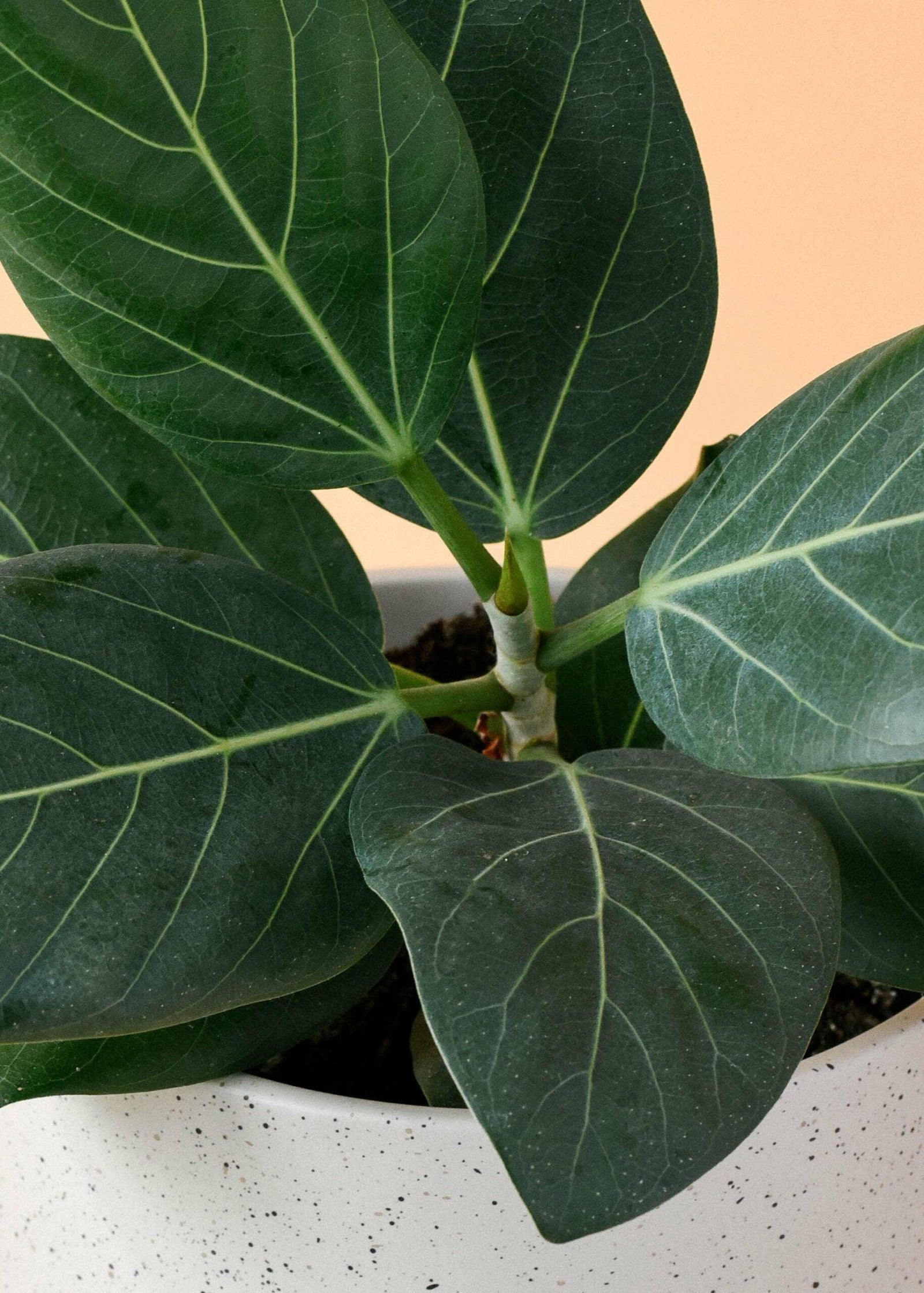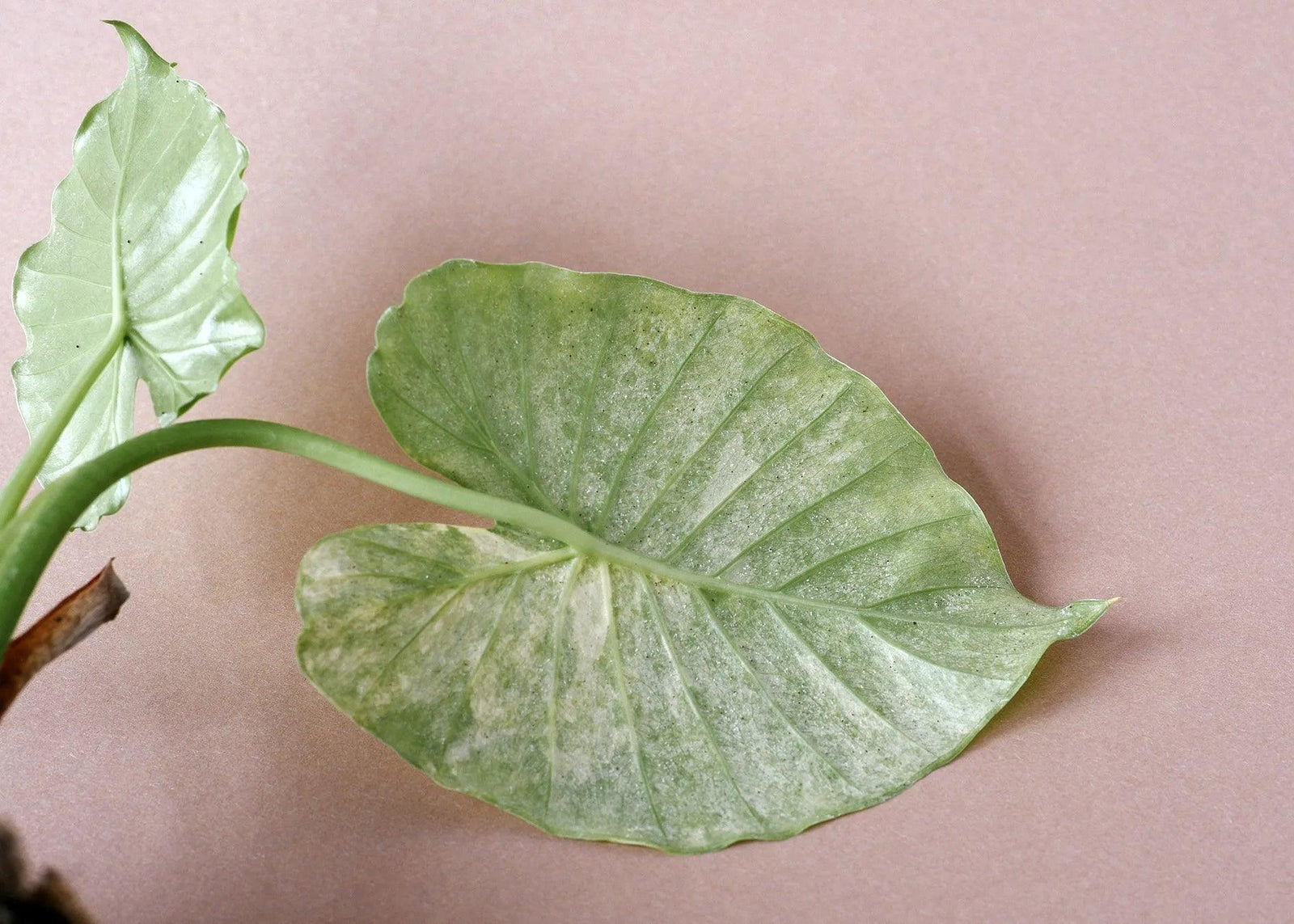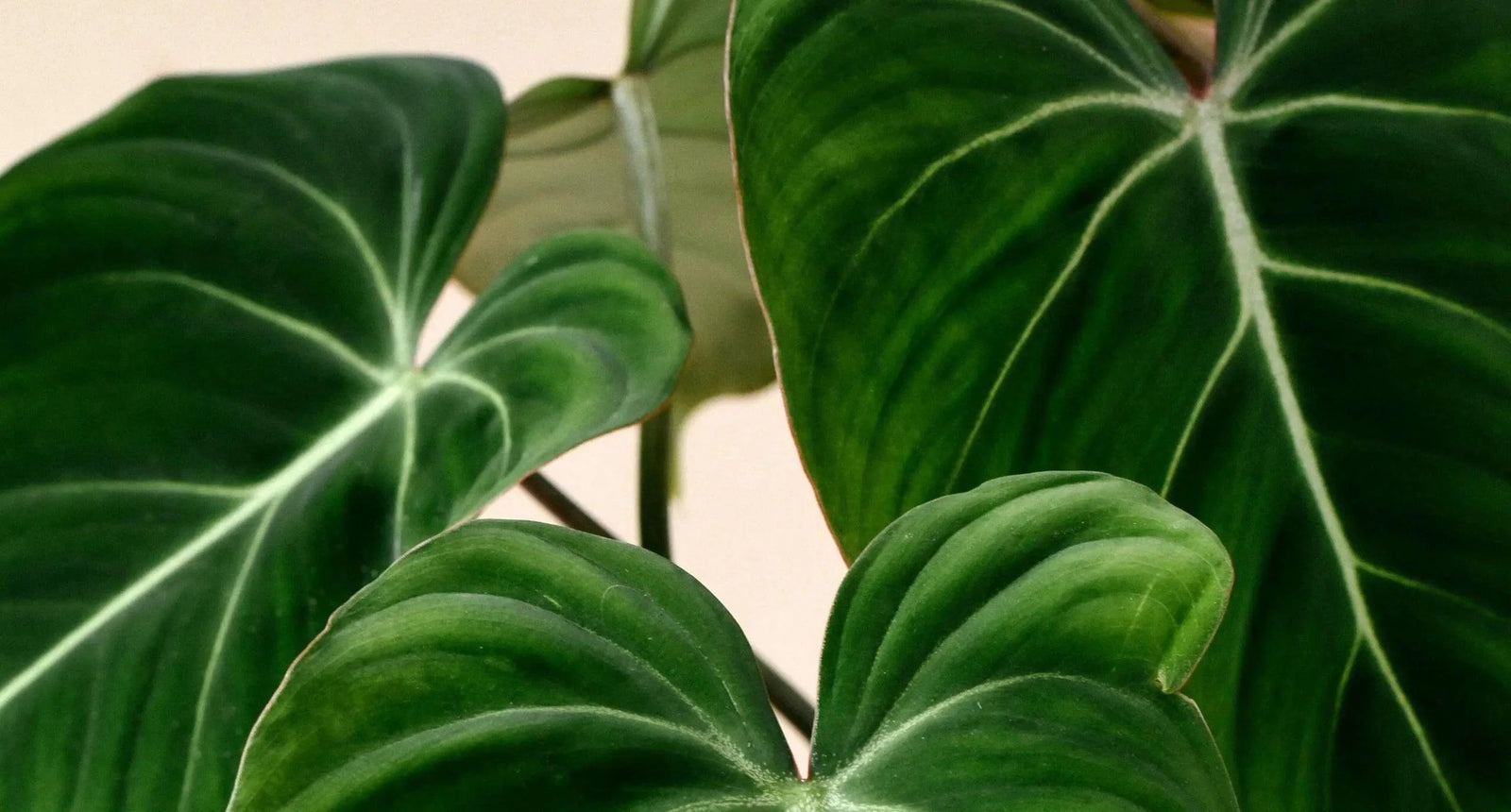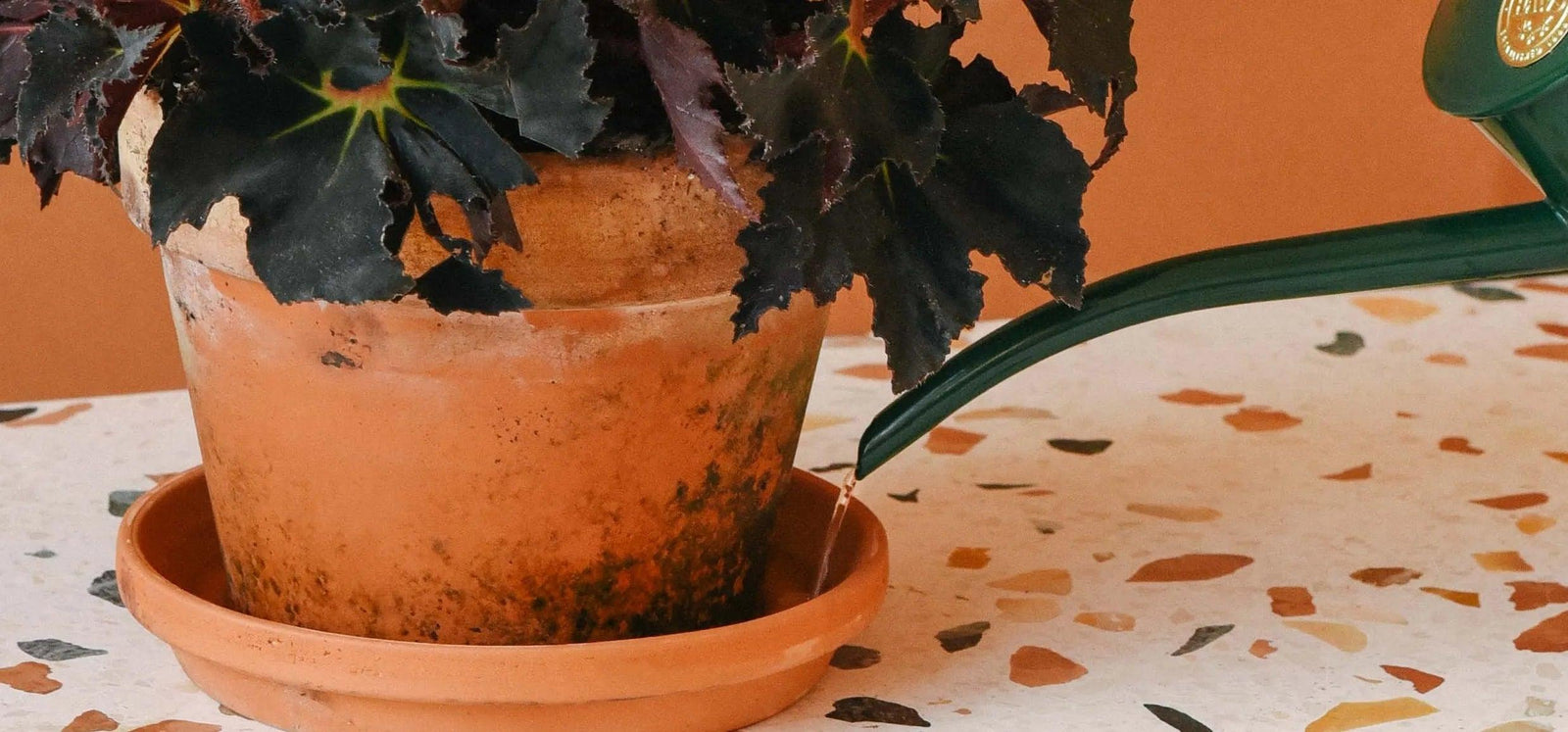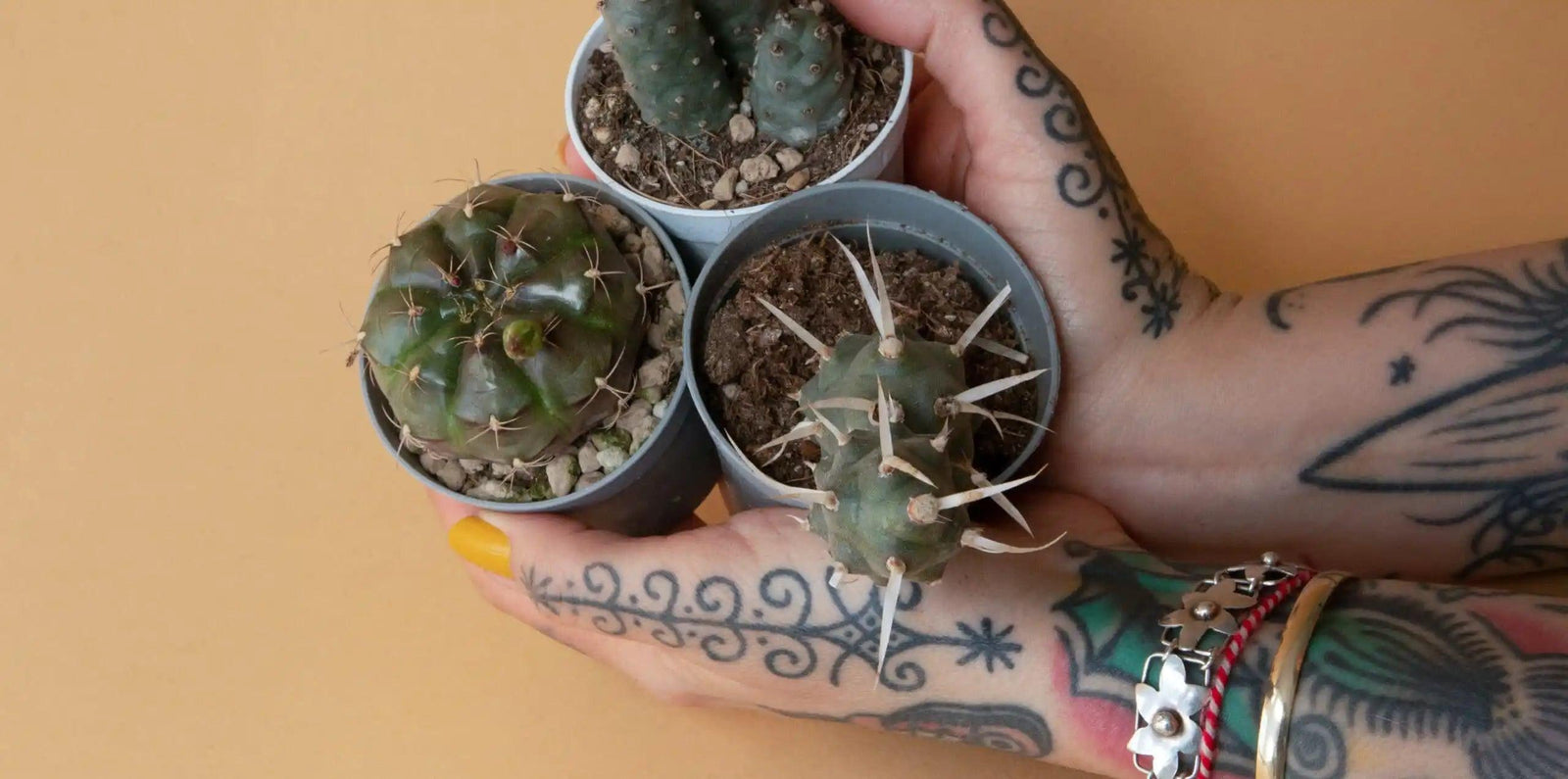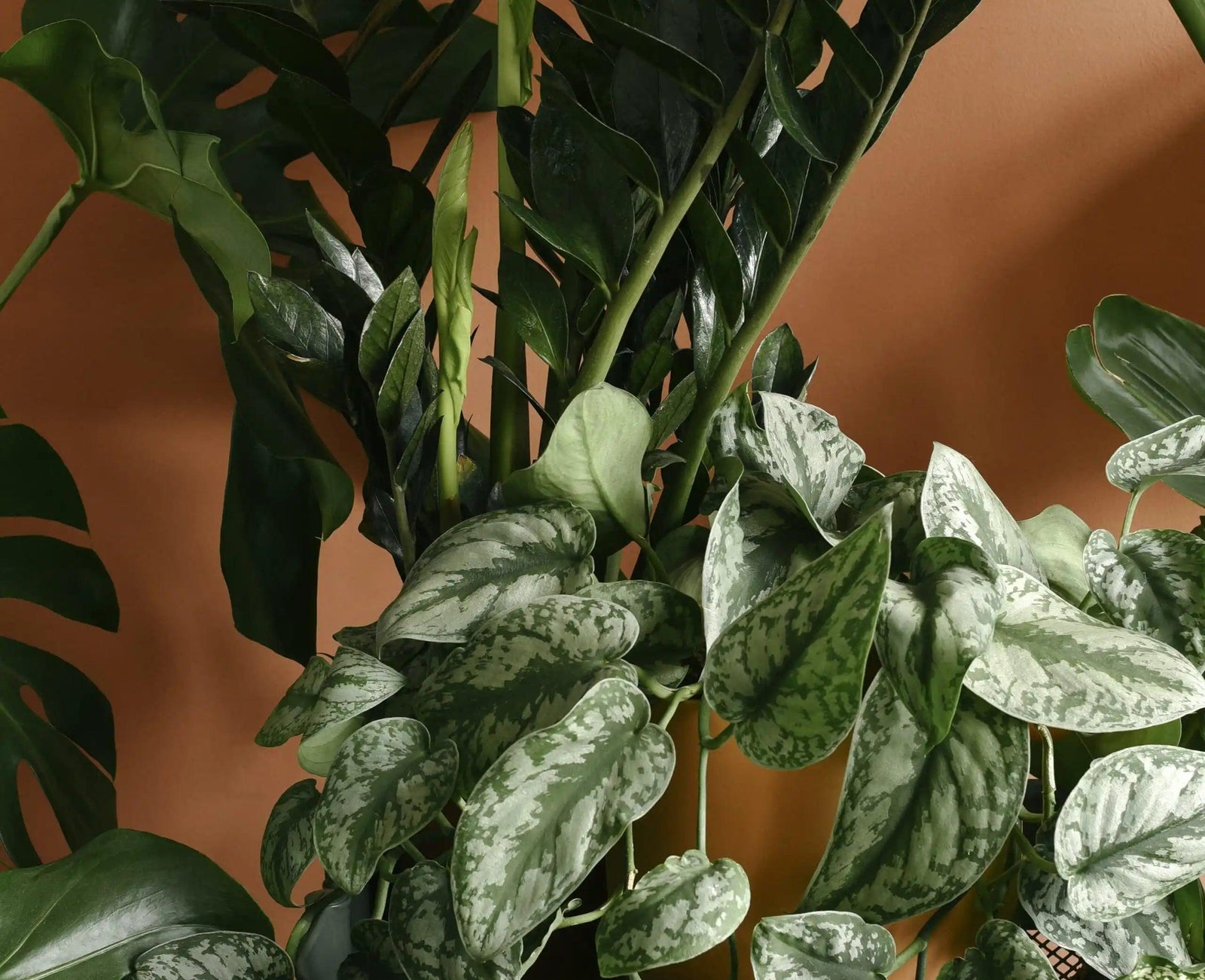In this plant profile we get into Scindapsus! Learn about where they’re from, how to care for them, and how to tell them apart!
The Scindapsus is a popular genus, commonly known as ‘Satin Pothos’ or ‘Silver Pothos’, despite not actually being a Pothos at all! Not an Epipremnum, and not a Philodendron either, although sometimes mistaken for that too, Scindapsus belongs to the Araceae family, which is native to Southeast Asia, New Guinea, Queensland, and a few western Pacific islands.
The most common Scindapsus species in cultivation today is the Scindapsus Pictus, followed by Scindapsus Treubii, which has only recently become more commonly available due to an increase in popularity.
Scindapsus plants are highly decorative, climbing vines with thin stems and rooting at the nodes. These plants are some of the best selling plants that we carry here at Plant Circle, and with good reason; not only are they easy to care for, but they’re also absolutely beautiful, and most importantly, affordable… even the rare ones!
Scindapsus Pictus was described in 1842 by German botanist Justus Carl Hasskarl. The name ‘Pictus’ comes from Greek and means ‘Painted’, and it’s not hard to understand why they decided to name it that! When young, this species is characterised by thick, velvety leaves, that are narrowly ovate with a heart-shaped, slightly asymmetric base. The leaves have a dark green color with silver-grey edges, and irregular spots of the same colour. In their mature form, the leaves become fully heart-shaped.
Left image, clockwise from the top: Silver Princess, sp Sumatra, Silver Splash, Silver Splash, Silver Princess
Right image: Exotica, Silver Hero, Silver Hero, Silvery Ann, Argyraeus
Some Scindapsus varieties have been on the market for a while, and are already in mass production, while others are more uncommon, or even rare. Scindapsus Treubii, for example, which is native to Jawa, Malaysia and Borneo, is a less common species of Scindapsus that has only entered the European market in very recent years. Scindapsus Treubii ‘Moonlight’ is the only species currently in commercial production in Europe, while ‘Dark Form’ is slowly making its way into European greenhouses.
At the end of this post we have compiled a list, to the best of our abilities, of the different varieties of Scindapsus Pictus and Scindapsus Treubii, that we are familiar with, sorted by how common or rare they are. The list will be updated on regular basis as we become familiar with new varieties. But first, let’s get into some basic plant care for this surprisingly low maintenance genus!
Growing tips. Although Scindapsus is a great plant to grow in hanging basket, and it’s tempting to just do that, if you want your plant to really achieve its full potential, and grow large sized leaves, try letting it climb something like a coco pole instead. The key here is providing the plant with a climbing surface made from organic matter. This allows the plant can grow its roots into the pole, and only then can the leaves can reach a truly impressive size!
Humidity. Scindapsus prefer temperatures around 18-20 degrees, but when it comes to humidity, which is so often a problem for plant lovers in drier climates, this plant doesn’t require a lot of humidity, and can even thrive under more dry conditions, so you won’t need to invest in a humidifier because of this plant!
Watering. Very basic; simply check with a finger and water the plant when top 3 cm of soil is dry, and let it dry out between waterings. This plant is very adept at communicating its needs, and its leaves will start to curl when it’s really thirsty!
Soil. Scindapsus likes a porous, well draining substrate that is rich in organic substance, like our aroid potting mix! The faster growing species will need to be repotted frequently, but you can tell that it’s time when you see the roots growing out of the bottom of the pot.
Light. The darker the Scindapsus, the less light it will need to survive, and while it prefers bright indirect sunlight, it can tolerate low light conditions. However, as with all plants, the less light it gets, the slower the growth will be! Note: Scindapsus Treubii tends to grow at a much slower rate than Scindapsus Pictus, who is considered an avid grower.
Pests and problems. If you notice your Scindapsus growing very small leaves it usually means that it’s in need of something to climb, or that the light it’s receiving is insufficient. When you notice the edges of the leaves rolling inwards, it means the plant is dehydrated and needs water right away, or that it’s suffering from root rot, which also prevents it from drinking. Common pests include the usual suspects; thrips, fungus gnats, and spider mites.
If you live with kids or pets, it’s important to remember that this plant is toxic if ingested!
Propagation. These plants are easily propagated by stem cutting or air layering.
Fun fact. Each variety of Scindapsus Pictus has the ability to suddenly produce a leaf that will look like another cultivar. We have come across ‘Silvery Ann’ producing ‘Argyraeus’ leaves, and ‘Silver Splash’ suddenly growing an ‘Exotica’ patterned leaf, so don’t say this genus isn’t full of surprises!
Common types of Scindapsus Pictus (commercially produced):
Uncommon types of Scindapsus Pictus:
- Scindapsus Pictus ‘Silver Hero/Platinum’
- Scindapsus Pictus ‘Silver Splash/Silver Cloud’
- Scindapsus Pictus ‘Silver Lady’
- Scindapsus Pictus ‘Silver Princess’
- Scindapsus Pictus ‘Jade Satin’
Rare types of Scindapsus Pictus:
- Scindapsus Pictus var ‘Argyraeus Dark Form’
- Scindapsus Pictus ‘Jade Satin Variegated’
Common types of Scindapsus Treubii:
Uncommon types of Scindapsus Treubii:
Rare types of Scindapsus Treubii:
- Scindapsus Treubii ‘Variegated’
- Scindapsus Treubii ‘Mint’




